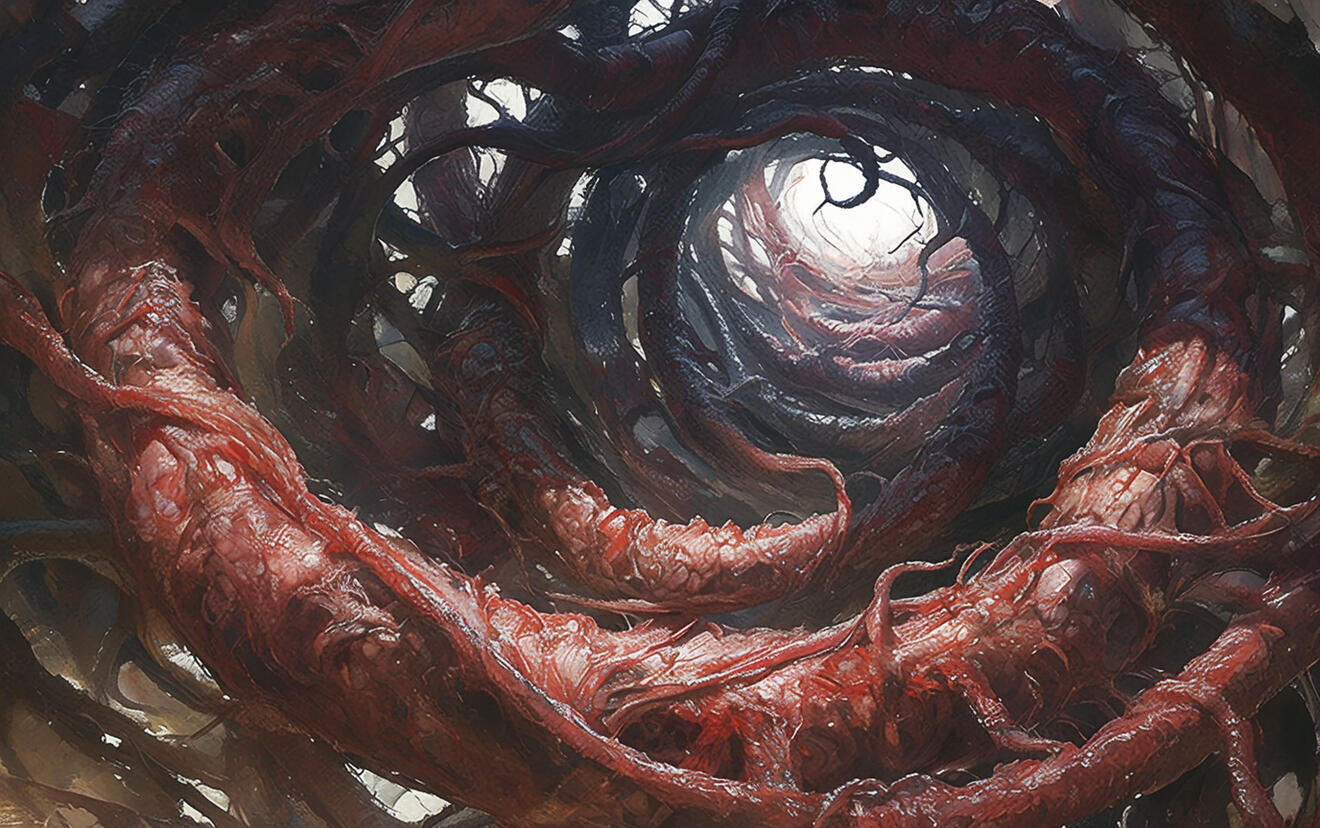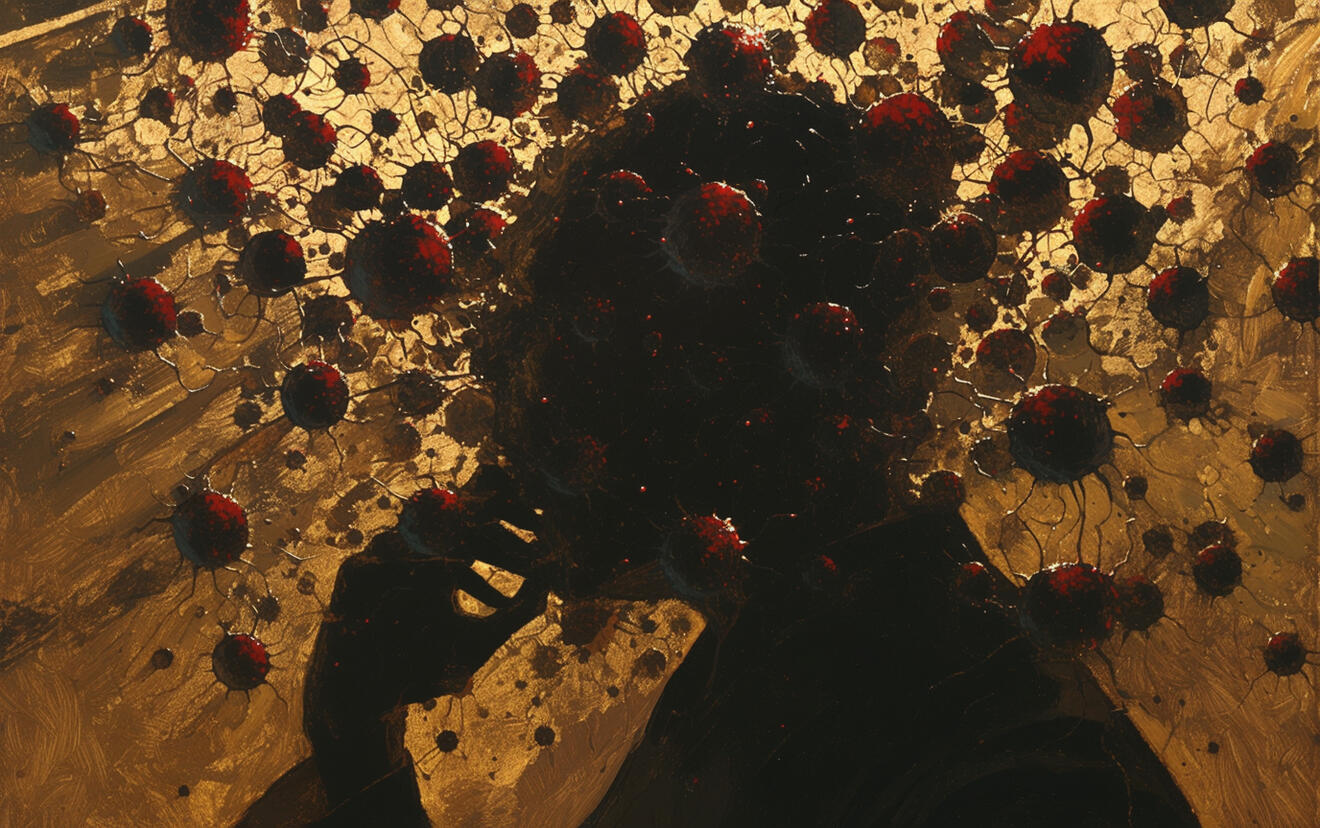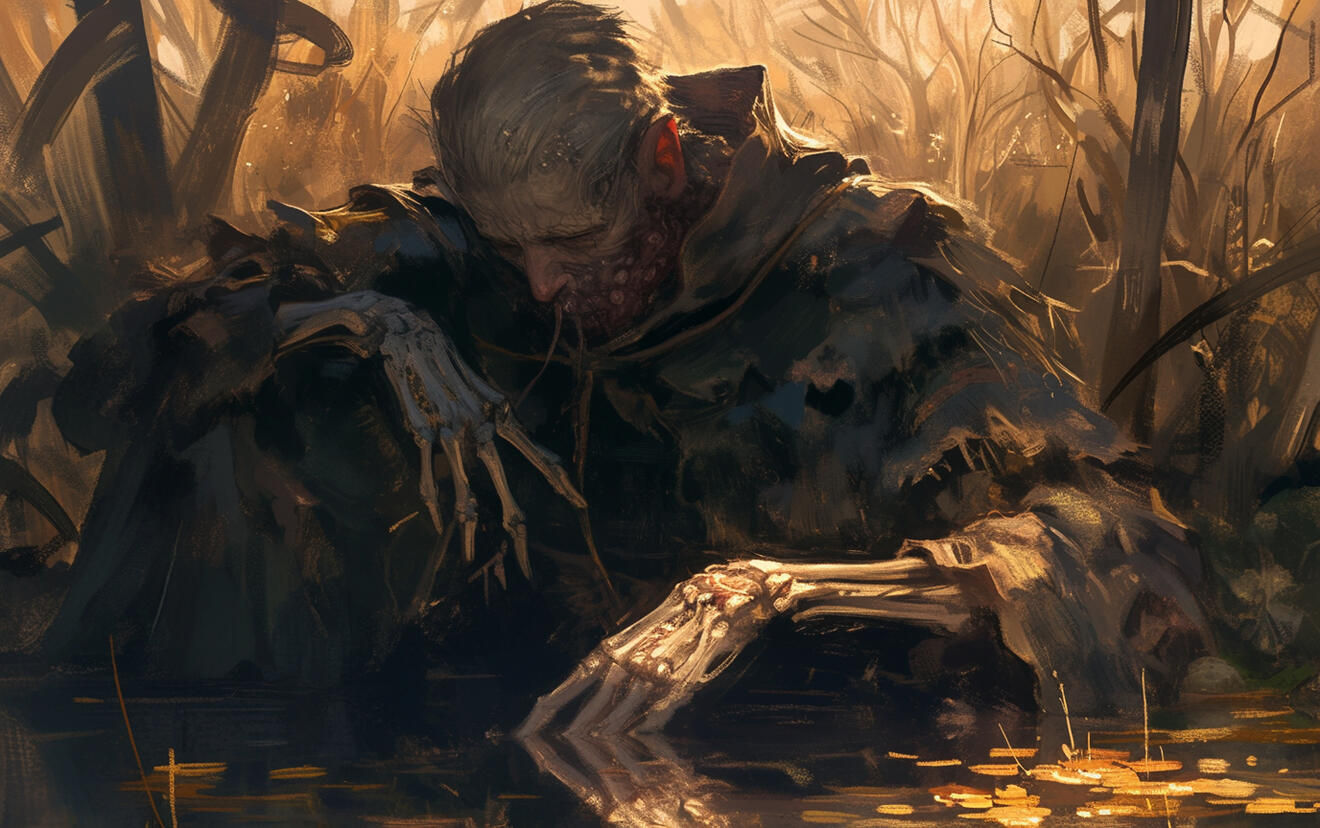Shattered Horizons: Echoes of the End
The world has come to an apocalyptic Hell. An outbreak of a detrimental illness has infected millions of individuals around the United States in a matter of days; turning them into hideous undead creatures. From there, everything amplified as unsuspecting and confused individuals were infected. Now, small and large groups of survivors are the only hope left of humanity. Though not all of them are in line with morals and instead are starving for power and control over an out-of-control world.
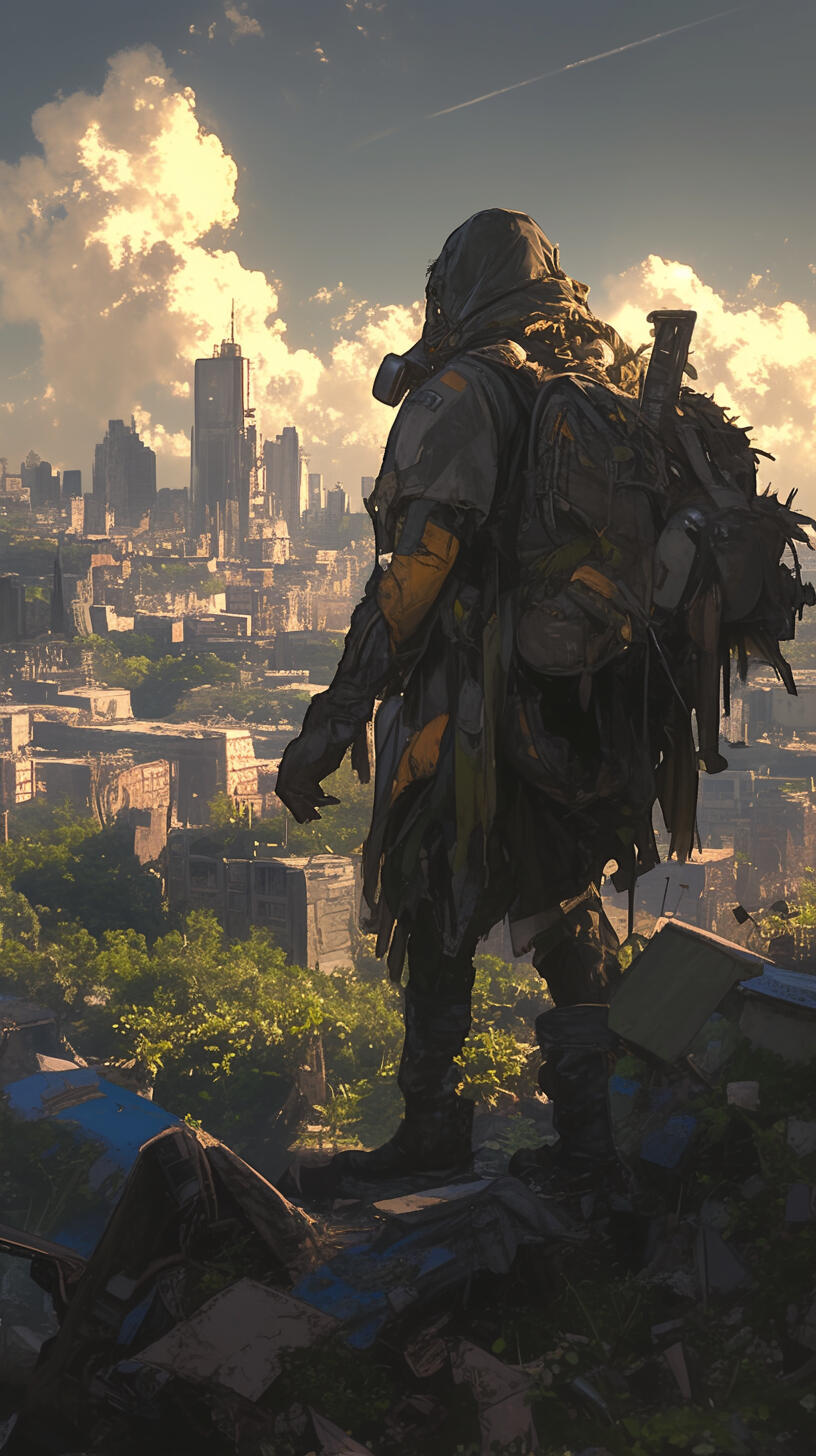
Shattered Horizons
Echoes of the End
Welcome to Shattered Horizons: Echoes of the End, your guide to surviving and thriving in a world transformed by a catastrophic apocalypse. In our universe, survival isn’t just about staying alive—it’s about navigating a landscape reshaped by devastation, adapting to new norms, and building a future amidst the ruins.
Our platform is a hub for explorers, survivors, and strategists, offering essential tools and knowledge for enduring the apocalypse. Whether you're bracing for an outbreak, facing the challenges of decontamination, or preparing for the unexpected, we provide detailed survival protocols, interactive resources, and visual guides to empower your journey.



Our Mission
To equip individuals with practical, actionable strategies and resources for navigating a world irrevocably changed. By fostering resilience and innovation, we aim to support survivors in rebuilding communities and forging paths forward in a hostile environment.Our world may be in ruins, but humanity's will to survive is unbreakable. This site exists to help you adapt, prepare, and overcome the challenges of a post-apocalyptic reality. Together, we can rebuild, one step at a time.Join us as we navigate this new world and discover that even amidst chaos, hope remains. Maybe you'll have what it takes to survive.
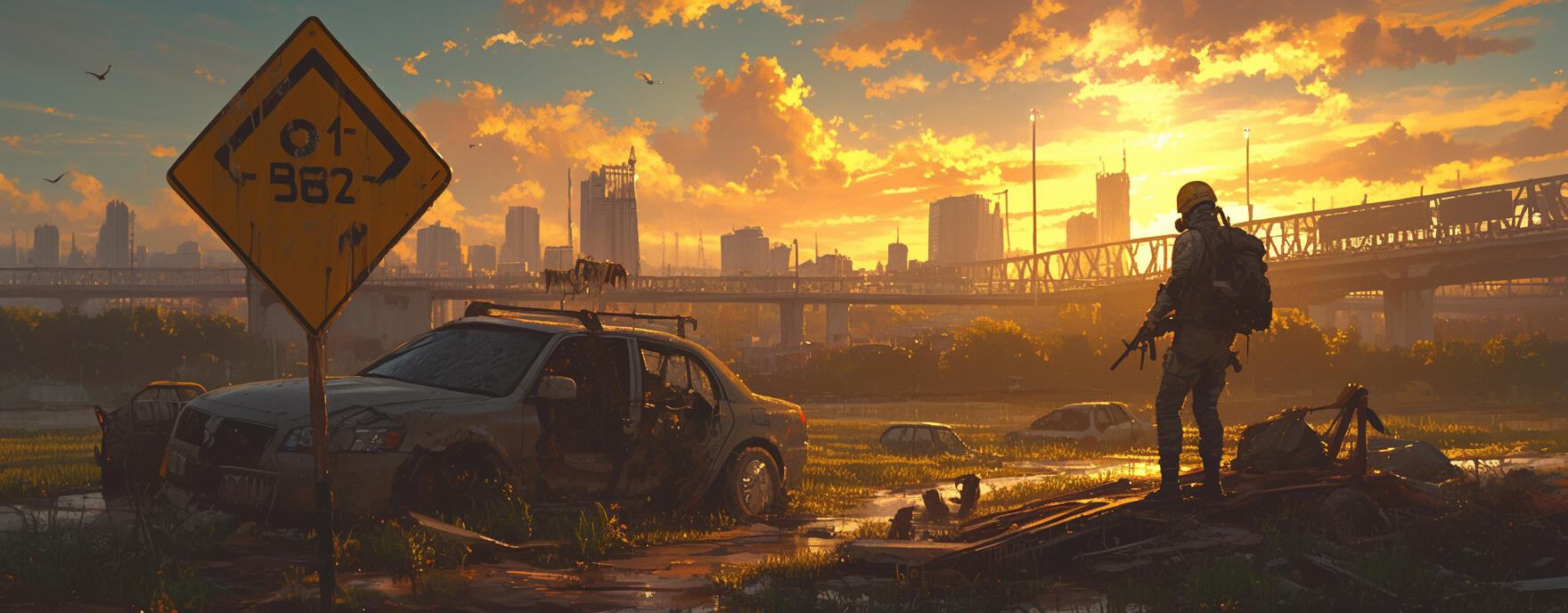
Chronicles of Collapse
The Unfolding Crisis in the United States
Public Health Response
Initial Assessment: Description of the CDC and WHO efforts to understand the parasites’ biology, infection patterns, and potential treatments.
Failures: Discuss resource shortages, overwhelmed medical facilities, and public distrust in government messaging.
Impact of Asymptomatic Carriers: Analysis of how asymptomatic individuals accelerated the spread unknowingly.
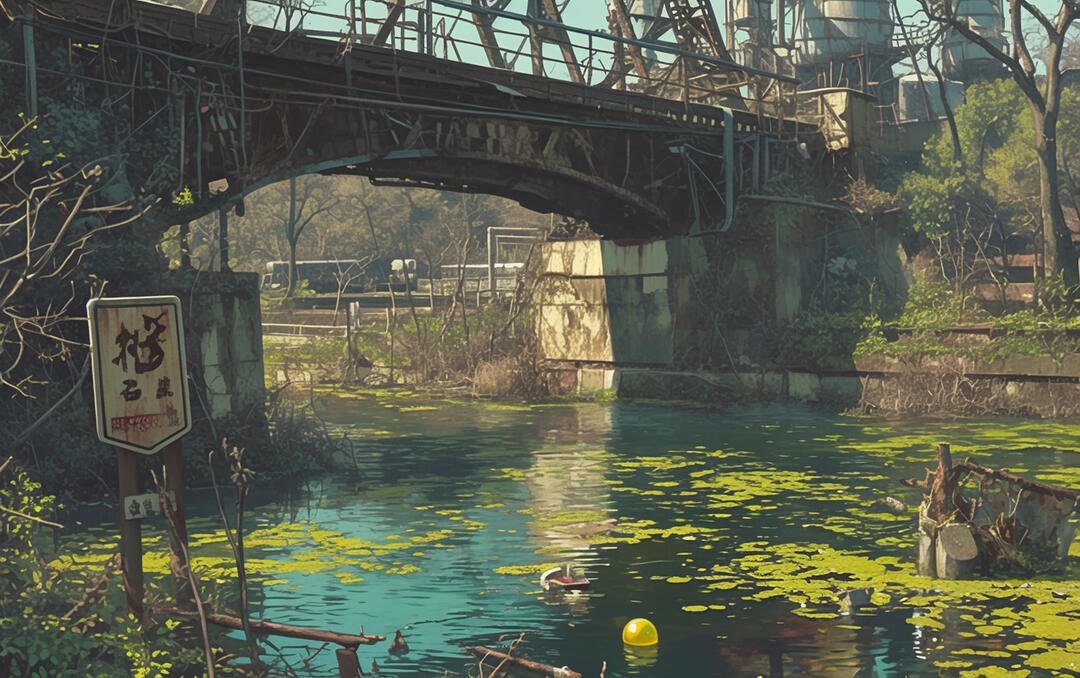
Outbreak Identified: First reports of infections localized to small towns or cities (e.g., "Springfield Incident").
Rapid Spread: The first documented cases of airborne and waterborne transmissions across state lines.
Quarantine Failures: Attempts to contain infection zones backfire, with infrastructure collapse in affected areas.
State of Emergency: Federal government imposes martial law and curfews, but the infection proves uncontrollable.
Fall of Cities: Major metropolitan areas, including New York City and Los Angeles, report uncontrollable outbreaks.
Disinformation and Panic: Conspiracy theories and misinformation lead to mass hysteria, undermining containment efforts.
Collapse of Governance: The federal government retreats to secure bunkers as the infection decimates urban populations.
What We Know:
The Parasite’s Strengths
Enhanced physical abilities, acute hearing and smell, and relentless aggression make Blood Walkers nearly impossible to evade.
Confirmed Weaknesses
Depending on mutations, Blood Walkers are completely blind, or cannot hear, but their other heightened senses compensate significantly.
Survivor Challenges
In a world devoid of communication and electricity, survivors face threats not just from Blood Walkers but also from fractured humanity.
The United States now stands as a shadow of its former self, leaving survivors to wonder if salvation—or extinction—awaits them.
As the nation grappled with the rampant spread of the 264-XM-P parasite, the social and economic fabric of the United States unraveled at an alarming pace. Major urban centers were decimated within days, while smaller towns and neighborhoods fell to the advancing waves of Blood Walkers. What began as isolated outbreaks quickly escalated into a nationwide catastrophe, overwhelming emergency services, hospitals, and governmental structures.
The first signs of societal breakdown were marked by widespread panic. As news of the outbreak spread—initially dismissed as a hoax—public trust in media outlets and the government evaporated. Cities became war zones, with residents desperately attempting to flee, clogging highways, airports, and seaports. Transportation routes became death traps as Blood Walkers attacked panicked civilians. The infrastructure that once sustained the nation was overrun; vital services, including emergency responders, public health officials, and law enforcement, were decimated in the chaos.

Breaking News

The United States becomes a global pariah as other countries impose strict travel bans and quarantine measures. Early cooperative efforts failed due to mistrust and mismanagement. Varied responses from other nations—some devolving into chaos, others thriving through authoritarian control.
How the 264-XM-P Parasite Devastated the Nation
The Genesis of the 264-XM-P Parasite
Date: [10 Months Before the Outbreak]
Reports suggest that NASA spearheaded research on the now-infamous 264-XM-P parasite under highly classified circumstances. While the origins of this parasite remain undisclosed, leaks suggest it was intended for groundbreaking applications in medical regeneration and biological resilience. For nearly eight months, testing appeared to progress smoothly, until an accident in the lab triggered a catastrophe.
A rogue scientist, identified only as "Dr. G," sought to fast-track his findings for personal fame and financial gain. In the process, a rack of parasite-laden beakers was shattered, leading to Dr. G’s rapid infection. Within hours, his zombified state—characterized by unprecedented aggression and heightened physical abilities—wreaked havoc, infecting several close colleagues. This event marked the first known transmission of the parasite from host to host.
Containment Failure at NASA’s Science Wing
Date: [9.5 Months Before the Outbreak]
As infected individuals spread within the facility, panic overtook the uninfected scientists. Decisions to neutralize the infected were delayed due to personal connections, allowing the parasite to escalate beyond control. When neighboring research wings noticed communication disruptions, teams ventured into the compromised sector, only to meet the same grisly fate.
Early accounts reveal that the infected—dubbed "Blood Walkers"—displayed enhanced speed, agility, and predatory instincts. Despite blindness, their acute sense of hearing and smell rendered them relentless hunters. These mutations made containment impossible as the infection breached facility walls, spilling into nearby communities.
Blood Walkers Go Public
Date: [Outbreak Day]
News broadcasts initially dismissed the unfolding events as a prank or isolated lab incident. However, live coverage took a horrifying turn as Blood Walkers stormed television stations, attacking journalists and crew members during broadcasts. Footage of on-air decapitations and mutilations shocked the nation, sparking widespread panic.Transportation hubs became death traps as millions attempted to flee urban centers. Highways, airports, and ports were clogged with traffic, leaving individuals vulnerable to the advancing hordes. What began as an isolated outbreak spiraled into a nationwide massacre.
Collapse of Infrastructure
Date: [Weeks After the Outbreak]
As cities, neighborhoods, and rural areas fell to the infection, critical infrastructure collapsed. The absence of personnel to maintain power grids, fuel supplies, and communication systems plunged the country into darkness. Survivors were left without access to news, emergency broadcasts, or even basic utilities.Social media, television, and the internet—tools that once connected the world—went silent. Survivors were left isolated, unsure if the rest of the world was aware of the crisis or if aid was forthcoming.
Rise of Factions Amid Chaos
Date: [Ongoing]
With the nation in ruins, survivors began forming factions to endure the hostile environment. These groups range from cooperative communities striving to rebuild to militant factions seizing power through violence. Confusion and distrust remain rampant as many question whether a cure exists or if other countries, such as those in Europe, are even aware of the devastation.
Survivor Testimonies
Jamie, 34 – Former Teacher, Now Group Leader
"I didn’t believe it at first. How could I? It started with a kid coughing in my classroom, and two weeks later, half the town was gone or... worse. We tried to leave, but the highways were gridlocked—cars abandoned, families wandering, and then the walkers came. I lost my husband that day. He told me to run while he held them off. Now, every step I take is for him. I’ve learned to lead because staying still means death. We scavenge, we share, and we survive. It’s not the life I wanted, but it’s the only one I’ve got."
Marcus, 21 – College Student Turned Medic
"I was on campus when the first alert went out. They told us to shelter in place, but no one listened. We thought it was just another drill until the screams started. I watched my professor collapse mid-lecture, veins turning black. My friends and I barricaded ourselves in the science building for weeks, using what we could find to patch up wounds and ration food. When the military came, they didn’t save us—they tested on us. I’m alive because I escaped. Now, I use what little medical training I’ve picked up to keep others alive. It’s not much, but it’s something."
Lila, 47 – Former Nurse, Survivor of a Quarantine Camp
"The quarantine camps were supposed to protect us, but they turned into nightmares. Every day, people disappeared, taken for testing or because they 'showed symptoms.' The rest of us were crammed into tents, surrounded by fences, with guards who barely had enough ammo to keep the walkers out. When the power failed, chaos broke out. I made it out with a group of kids I’d been caring for. We lost two to the infection before we found a safe house. I don’t know if I’ll ever feel safe again, but I’ve promised those kids I’ll keep them alive."

Scientific Discoveries: The Dark Side of Innovation
Date: [Post-Outbreak]
The scientific community, which had long been seen as the beacon of progress, now found itself at the center of an ethical maelstrom. The discovery of the 264-XM-P parasite, initially hailed as a potential breakthrough in biological sciences, became a nightmare that no one could contain. What had begun as a promising research project by NASA quickly spiraled into one of the most destructive outbreaks in human history.
Initial Discoveries
In the months leading up to the outbreak, NASA’s research on the parasite seemed to be focused on enhancing human biological resilience—perhaps for long-term space travel or medical applications. However, the parasitic nature of 264-XM-P was not fully understood until the lab accident. As parasites entered the body of Dr. G and later spread, scientists realized that the parasite was far more dangerous than initially predicted. It not only zombified its hosts but also enhanced their physical attributes, making them nearly impossible to kill or contain.The mutation of the parasite was another shocking revelation. Blood Walkers—once humans—displayed a terrifying new biological state, with enhanced strength, agility, and senses. These mutations suggested that the parasite was evolving rapidly, adapting to its host in ways previously thought to be impossible. In time, it became clear that the parasite was not simply a virus—it was a living organism capable of influencing its environment and host in unanticipated ways.
Ethical Dilemmas
With the outbreak out of control, the ethical questions surrounding the parasite's research and the unintended consequences it had on human lives became impossible to ignore. Scientists were left grappling with their role in the catastrophe. Should they have proceeded with such high-risk research? Should they have considered the potential dangers of biological experimentation, especially with an organism capable of evolving in such violent and dangerous ways?Furthermore, the question of the "cure" became a significant moral dilemma. As more individuals became infected, and society spiraled further into chaos, scientists were faced with an ethical choice: to attempt a cure at the risk of further experimentation and human lives or to abandon the pursuit of a cure and focus on survival. Some factions advocated for immediate action, while others were wary of making the same mistakes that had led to the initial outbreak.The dilemma also expanded into the question of survival. Some scientists attempted to engineer more effective weapons to combat the Blood Walkers, but others began to ask: were these once-human victims still individuals worthy of a cure, or were they lost to the disease forever? As more people turned to violence to protect themselves from the infected, the lines between survival and moral responsibility grew increasingly blurred.
Ethical Quandaries in the Wake of Societal Collapse
With the breakdown of society came a loss of the ethical framework that had governed human interactions. The lack of law enforcement, the breakdown of family structures, and the desperate need for resources led to extreme behavior. Self-preservation became paramount, and many survivors found themselves forced to make impossible choices.
Survival vs. Morality
In the face of bloodthirsty Blood Walkers and dwindling resources, some factions turned to ruthless methods to survive. Moral lines were often crossed—thievery, violence, and betrayal became commonplace as survival trumped ethical behavior. This led to the creation of warlord-like figures who controlled resources and territories, imposing their will on others. Many of the surviving scientists who had once been part of the cutting-edge research were now hunted as potential threats or sought out for their knowledge.
The Question of Humanity
In a world where death and infection are constant threats, survivors began to question what it meant to be truly human. Was humanity defined by compassion and kindness, or by the will to survive at any cost? As factions grew more isolated and aggressive, many were left wondering: If civilization was no longer recognizable, what was worth saving? The ethics of leadership, governance, and survival in this new world became central to the survival of humanity itself.
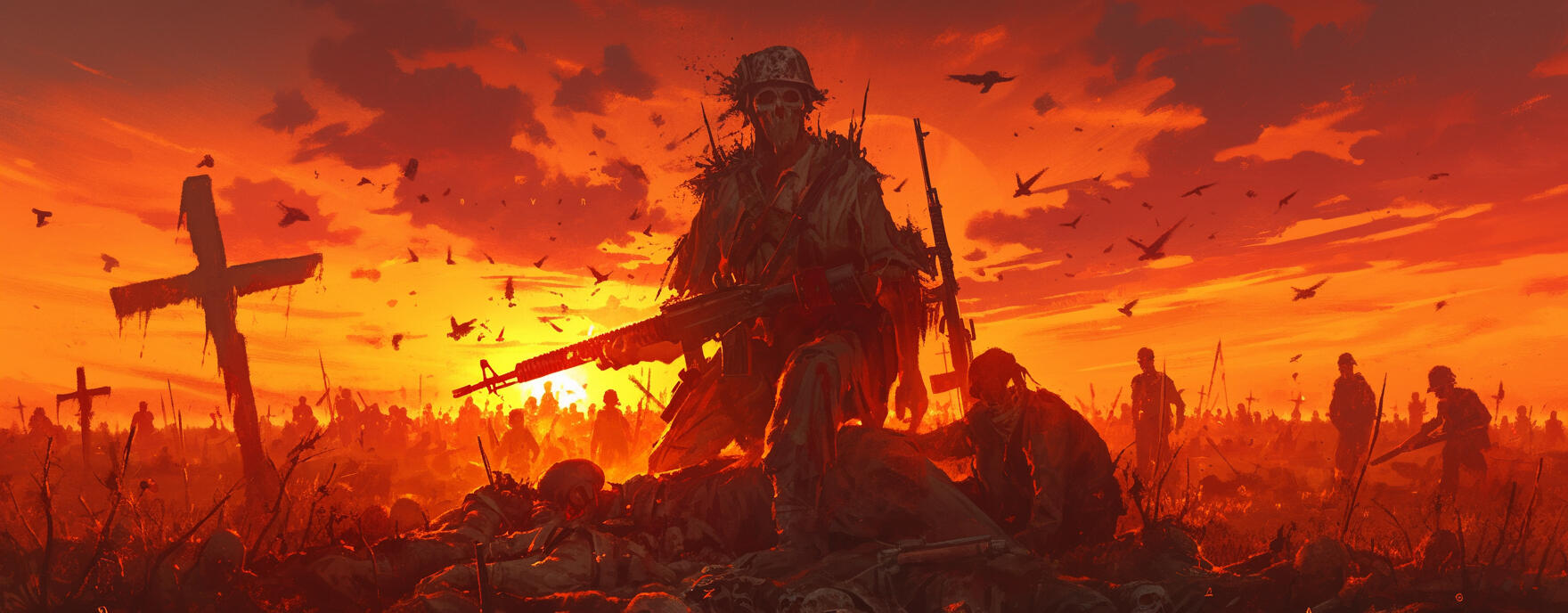
Survivor Faction Reports
Ashes of Humanity
Whispers suggest hidden allies of Ashes of Humanity are equally ruthless, waiting to be unveiled.
The leaders continue to force smaller survivor groups into submission. It it suspected that this faction enforces slavery and violent executions for resistance.
Motto: "Order through fear."
Founder: Lyle Goodspurg
Leadership Structure: The Sovereign Council and The Executors, operating under a power-sharing pact called "Smear Blood".
Notable Members: Breccan Brooks ("King"), Cormac Vail ("Prince"), Gideon Crowley.
Territorial Reach: Dominates multiple regions with tight control, strict surveillance, and violent rule.
The Hollowing
Recent attacks on trespassers suggest heightened nocturnal patrols. Reports of destroyed bridges and waterways, leaving survivors stranded. Reverence for nature as their strongest ally continues to fuel their survival tactics.
Motto: "The forest watches, the river waits."
Location: Hidden within dense forests, riverways, and creeks.
Tactics: Guerrilla warfare, sabotage, and territorial ambushes.
Unique Traits: Masters of survival and environmental weaponization (poisons, traps, natural defenses).
Blood of the Fallen
Alleged infiltration and sabotage of a rival faction’s outpost. Their vengeful reputation has placed them in constant conflict with survivalist groups. Increasing numbers as more survivors share tales of vengeance and solidarity.
Motto: "For the fallen, we rise."
Core Values: Revenge-driven and dedicated to avenging lost loved ones.
Tactics: Deception and infiltration to destroy hostile factions from within.
Housing: Utilize abandoned castles, homes, and churches for safety.
Whispers of the Dead
Rumors of new hidden settlements along the coastline. Reports of intricate, hand-crafted tools and weapons emerging in local markets. Encounters with outsiders handled through stealth and subterfuge.
Motto: "Hidden in silence, bound by peace."
Demographics: Primarily women and children.
Location: Coastal regions with underground and treetop housing, camouflaged with natural foliage.
Unique Skills: Disguise techniques using blood walker skins and prosthetics.
Midnight Exodus
Increasing sightings during the night suggest their numbers are growing. Mastery of cold climates continues to give them a strategic advantage. Swift and lethal attacks leave no survivors to tell the tale.
Motto: "In the shadows, we thrive."
Identity: Enigmatic nocturnal group, operating exclusively in snowy regions.
Tactics: Stealth and blending with the dead to remain undetected.
Housing: Weather-adapted bases uniquely suited for extreme cold.
The Skinners
Reports of reinforced structures to combat natural disasters. Recent accounts of captured survivors being subjected to gruesome rituals. Growing fear of new alliances forming between The Skinners and other savage factions.
Motto: "Wear the dead, fear the living."
Unique Traits: Wear the skins of the undead for camouflage and armor.
Tactics: Ritualistic brutality, grotesque intimidation, and merciless violence.
Housing: Difficult-to-access treetop structures for safety and isolation.
Phantom Collective
Sightings remain rare, but their influence is felt across disputed territories. Whispers of an alliance with another secretive faction stir unease among survivors. Local scavenger groups have reported losing valuable resources without a trace.
Motto: "Seen by none, feared by all."
Core Values: Isolation, stealth, and self-preservation.
Tactics: Expert tracking, blending with the environment, and silent strikes.
The Forsaken
Tensions with Ashes of Humanity grow due to prior exploitation attempts. Increasingly hired by smaller factions for their ruthlessness and efficiency. Survivor testimonies reveal the group's hardened approach to the apocalypse.
Motto: "We are what the world made us."
Core Beliefs: Survival is paramount; hope and redemption are illusions.
Demographics: Outcasts rejected by other communities.
Tactics: Ruthless scavenging, mercenary work, and retaliatory strikes.
The United States has been split into many different factions in every state, some more intense than others. However, the most predominant groups reside in the top 10. There are other small factions that also have their own living style but are quite difficult to track down due to their complicated longevity. In addition, there are solo survivalists as well who have yet to be discovered dead or alive.

Ashes of Humanity
The Ashes of Humanity are a large, authoritarian group with one goal—total domination over the remnants of civilization. They view themselves as the natural successors to humanity’s fallen governments and believe that only through their leadership can order be restored. Ruthless, vile, and corrupt, they use intimidation, force, and manipulation to bend survivors to their will. They recruit heavily through fear tactics, often forcing groups into submission or executing those who resist. Their rule is characterized by strict control, heavy surveillance, and a violent disdain for any who challenge their rise to power. They are practically the rivals of all of the factions and it is unknown who Ashes of Humanity is allied with; though, faint whispers are going around about undiscovered factions that are allied with Ashes of Humanity and are just as dangerous, if not worse.

The Comms

Sleeping Quarters

Base Camp
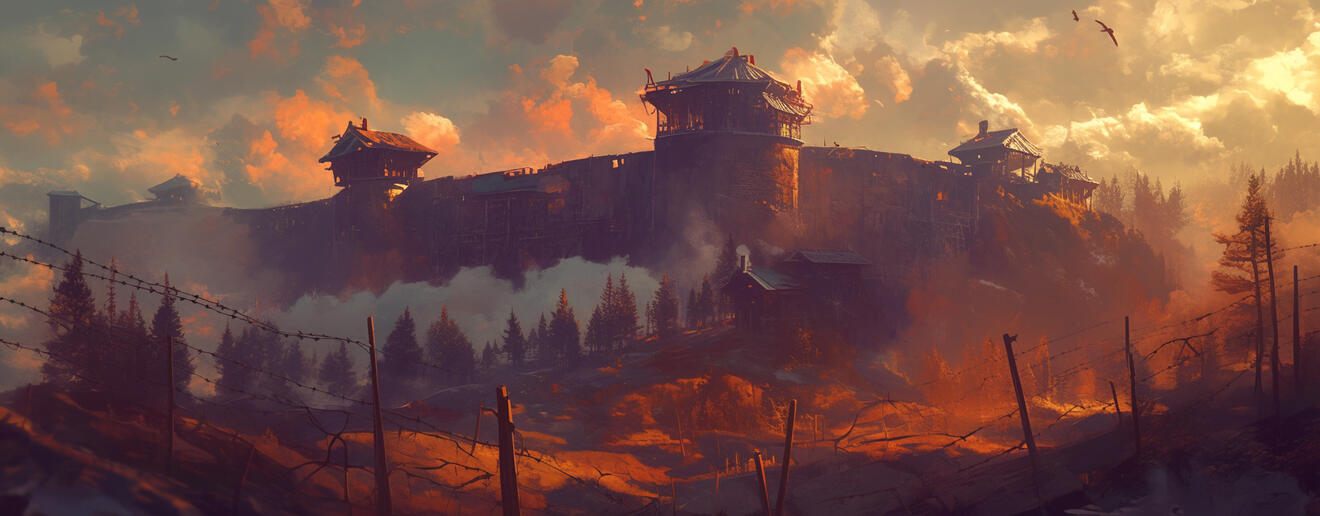
Fort Knox, Kentucky:
Once a symbol of impenetrable security, this former military installation is now controlled by Ashes of Humanity. Its fortified walls, sprawling barracks, and underground bunkers provide them with the resources they need for defense and dominance. Guard towers and barbed wire fences loom over the surrounding forests, giving the faction an unshakeable presence.Cheyenne Mountain, Colorado:
Nestled within the Rocky Mountains, this old NORAD base, with its deeply entrenched tunnels and hardened command centers, serves as a central hub for Ashes of Humanity. Its immense natural protection and cold, mechanical interiors reflect the faction’s militaristic focus and desire for control.Fort Bragg, North Carolina:
The remnants of one of the largest military bases in the U.S. have become a strategic point for Ashes of Humanity. The base’s expansive training grounds, hangars, and barracks make it an ideal location for weaponry stockpiles and tactical planning.The Ruins of New Orleans, Louisiana:
The faction has taken refuge in the partially submerged buildings and crumbling facades, creating fortified enclaves amidst the lush, overgrown foliage that has reclaimed the streets. Flooded areas are navigated with makeshift rafts, while rooftop gardens provide essential crops and a sense of community in the face of despair. While watchtowers made from salvaged materials loom over the landscape, ensuring vigilance against threats.
The Ashes of Humanity faction thrives on violence, slavery, and intense manipulation. The majority of the men that make up the elite leadership (The Sovereign Council ⅋ The Executors) are egotistical, cunning, sly, and extremely malicious. Post-apocalypse, these men were used to getting their hands dirty to create highly respected reputations for themselves--no matter what. While they may butt heads from time to time, all of them have created a deal called "Smear Blood" that ensures they all get an equal share of resources and power within their respective outposts. However, not all of them are truthful to each other, and separate deals are made underneath each web of relationships between the Sovereign Council and the Executors. In general, the elite team of leaders often offer "protection" to smaller groups in exchange for total allegiance and resources.
☣ Smear Blood ☣

THE "DEAL" Once the elite members of the Sovereign Council were completed at a number of four, they all knew that they needed a system in order to keep things "fair" among themselves. They decided to spread out over the United States to territories that have the most beneficial attributes both landscape-wise and resource-wise. Lyle Goodspurg took over the largest area in Fort Knox, Kentucky due to its size and protection. Of course, it was difficult to clear out the military installation upon arrival. Cormac Vail took over the less obvious base in Cheyenne Mountain, Colorado; utilizing its entrenched tunnels to stay hidden from other survivalists and blood walkers. Gideon Crowly took over another military base, yet one of the largest military bases in the United States, in Fort Bragg, North Carolina. His previous experience with weaponry, tactical planning, and military intelligence gifted him the position of controlling this base. Lastly, Breccan Brooks took over The Ruins of New Orleans, Louisiana. His advantage stems from his experience living in ghettos and scouting out abandoned buildings for drug deals and or underground plans. The Smear Blood deal also comes with its consequences if a member has proved to be faulty or dishonest; resulting in torture, humiliation, and dehumanization before they are stripped naked in front of the entire group and are forced to be killed by blood walkers.
All members of Ashes of Humanity were forced to submit under Lyle Goodspurg's reign. Goodspurg is the original founder of the group. Having witnessed many individuals fall prey to the blood walkers, he believed that the key to survival is by a means of instilling fear and violence to prevent others from making irrational decisions that could lead to their demise. Goodspurg intentionally hunted down lone survivors and or groups, forcing them to join his faction with a promise of "safety, protection, and resources" or be slaughtered on the spot for rejecting his "kind" offer. As his group expanded, he met three other survivors who had the same beliefs as him. Breccan Brooks also known as "King", Cormac Vail also known as "Prince", and Gideon Crowley. Together, they all work under Goodspurg and maintain other territories of Ashes of Humanity systematically.
The Sovereign Council

Breccan Brooks - Coming Soon

Cormac Vail - Coming Soon

Gideon Crowly - Coming Soon
The Executors

Talos Grimshade - Coming Soon

Jorik Ashbane - Coming Soon

Drenor Calyx - Coming Soon

Vayne Nocturne - Coming Soon

● The Iron Tyrant ●

Appearance
SKIN : tanned beige + rough + scarred + tattooed + dirty
──────────────────
HEIGHT : 6'3ft, 190.50 cm
──────────────────
HAIR : buff-bronze brown + side shaven + overhangs on one side + straight + jaw length + thin eyebrows
──────────────────
EYES : Narrow + downturned + deep-set + steely + hooded + bronze hazel color
──────────────────
BODY : Muscular frame + Defined pecs + broad shoulders + thick thighs + broad back + large hands + visible defined v-line + prominent V-shaped lines at the lower torso, where the obliques taper into the lower abdomen, enhancing the muscular definition + tattoos on neck + tattoos on arms + toned abdomen + scarred + strong core + dirty nails + calloused hands + black smudged eyeliner
──────────────────
FACE : Stubble + High cheekbones + Sharp jawline + Guaged stretched ears + Thin lips + Straight pointed nose + Soft arched eyebrows + White teeth + visible adam's apple + rugged
Intimacy
text text text text text text text text text text text text text text text text text tex tex tex tex text text texttext text text text text text text text text text text text text text text text text tex tex tex tex text text text text text text text text text text text text text text text text text text text text tex tex tex tex text text text
text text text text text text text text text text text text text text text text text tex tex tex tex text text texttext text text text text text text text text text text text text text text text text tex tex tex tex text text text text text text text text text text text text text text text text text text text text tex tex tex tex text text text
| Kinks |
|---|
| Text |
File Number #2521648-32
Purpose Code PS-RL415-L
SRU ID SRU-LGSP77
⚠︎ NAME : Lyle Maximilian Goodspurg
───
⚠︎ NICKNAME : Steelhand
───
⚠︎ SURNAME : Goodspurg
───
⚠︎ AGE : 38
───
⚠︎ SEX/GENDER : Male
───
⚠︎ NATIONALITY : German
───
⚠︎ BIRTHDAY : March 28
───
⚠︎ LANGUAGE(S) : English, German, some Spanish
───
⚠︎ ZODIAC : Aries
Background
text text text text text text text text text text text text text text text text text tex tex tex tex text text texttext text text text text text text text text text text text text text text text text tex tex tex tex text text text text text text text text text text text text text text text text text text text text tex tex tex tex text text text
Personality
Very blunt, egotistical, short-temper, sarcastic, charming, deceptive, quick wit, highly intelligent, very good at twisting people's words, sardonic, masochist
Manner of Speech
Deep, gravelly voice that carries authority. His tone is usually steady, making it easy for others to listen to him + Direct communication, often getting straight to the point. He values honesty and expects the same from others + Dry sense of humor that surfaces in tense situations, helping to lighten the mood when necessary
| Likes | Dislikes | Skills | Behavior ⅋ Habits |
|---|---|---|---|
| Combat and Strength Training | Betrayal | Melee Combat Proficiency, Weapon Customization | Calm Demeanor |
| Nature | Unnecessary Cruelty | Strength, Endurance, Survival skills, Tactical thinking | Thoughtful Gestures; using deliberate hand movements |
| Crafting | Authority Figures | Leadership skills, conflict resolution | Staring intently |
| Loyalty | Disrespect | Physical conditioning, Intimidation tactics | Ritualistic weapon care, quiet reflection |
Weapon of Choice
Lyle wields a customized sledgehammer that is both functional and symbolic. The hammer's head is made of a rare, durable alloy, engraved with intricate designs that reflect his personal journey and values. He has carefully balanced the sledgehammer to suit his fighting style, allowing him to deliver powerful strikes while maintaining maneuverability. Lyle has adorned the handle with leather grips for comfort and added personal touches, such as engraved initials or symbols that represent his beliefs and loyalties. Beyond its use in combat, the sledgehammer serves as a tool for breaking through obstacles, both literal and metaphorical. He believes in using it not only to defend but also to forge paths for himself and his allies. His sledgehammer means a lot to him because it proved to be a "lucky charm" throughout his survival in the apocalypse. In addition, he decided to name it "Fortune".
𓏵 Fortune 𓏵
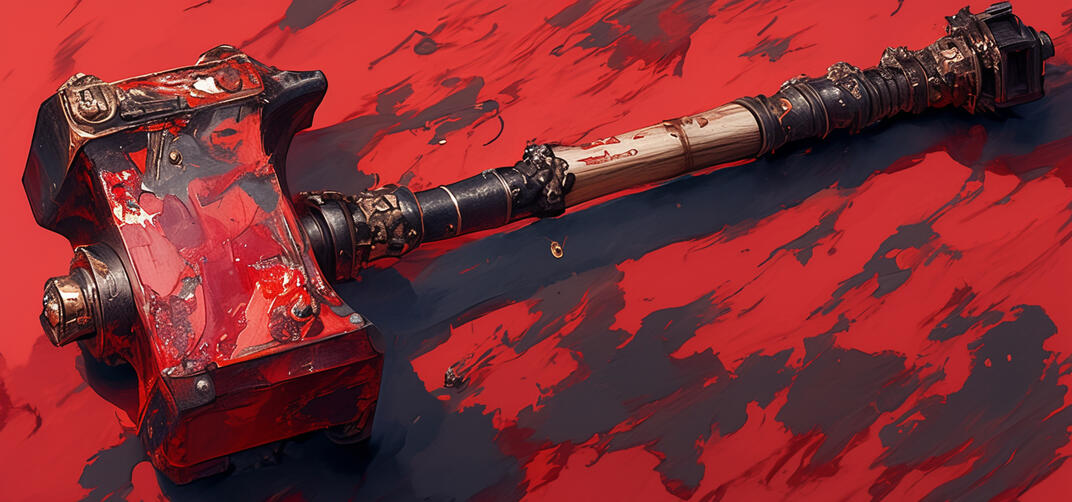


The Hollowing
"We don't have gills like a fish, but we have the teeth of a shark and the sting of a jellyfish." -The Hollowing
The Hollowing is a small, reclusive group that thrives in the deep forests, riverways, and hidden creeks. Their community is built around nature, using the waterways and woods to their advantage. They are adept in maritime survival and stealth, operating with a predator's mentality—swift, ruthless, and territorial. Though tight-knit within their own ranks, they are known for extreme hostility to outsiders. Their relationship with the natural world is symbiotic, and they view the environment as their ally in survival. They are particularly active during the night, hunting down any trespassers with precision.

The Comms

Sleeping Quarters

Base Camp

Appalachian Mountains, Tennessee/North Carolina Border:
Hidden within the dense, misty forests of the Appalachian range, The Hollowing has built their community near the rushing rivers and creeks that carve through the mountains. Treehouses and log shelters blend into the environment, while small fishing shacks line the waterways, offering sustenance from the rivers.Columbia River Gorge, Oregon/Washington:
The vast, winding river system of the Columbia Gorge provides natural defense and abundant resources. Shelters are built near waterfalls and deep within forested canyons, where fog and moss create a naturally veiled sanctuary. Wooden bridges stretch over creeks and tributaries, connecting different parts of their hidden encampment.Everglades, Florida:
Deep in the wetlands of the Everglades, The Hollowing has made a home amid the swamps and mangroves. Their stilted structures are built above the marshes, surrounded by dense tropical foliage. Hidden trails through the swamps and creeks allow for swift movement, and the sound of the water masks any human activity.
The Hollowing may appear friendly at first glance, but beneath the surface, they are ruthless survivalists. Having faced betrayal and violence during the early days of the apocalypse due to their initial openness, they now rely on brutality toward outsiders to maintain peace within their faction. They excel in nautical ambushes, guerrilla warfare, and sabotage, often destroying bridges and waterways to isolate their territory. Skilled in nature, crafting, and survival knowledge, The Hollowing uses the environment as their greatest weapon. Poisons, traps, weather patterns, and natural defenses are all harnessed to protect their lands. Revered as being one with nature, they believe that Mother Earth is the most powerful force—even in the apocalypse—and use that power to their advantage in every battle.

| Allies | Rivals |
|---|---|
| ⤷ Phantom Collective ⤷ Whispers of the Dead ⤷ Shadowed Dawn | ⤷ Ashes of Humanity ⤷ The Skinners |
The Elders of the Deep
The leaders, who have mastered both water and land survival. They make strategic decisions, govern their people, and set strict laws about interactions with outsiders.

Grayson Hargrove - Coming Soon

Wyatt Wilder - Coming Soon
The Riverborn
Skilled warriors who patrol the waterways, using their knowledge of the terrain to ambush and defend their territory.

Kellan Stanton - Coming Soon

Davian Winterbourne - Coming Soon
The Rooted
Gatherers, hunters, and trapmakers who use the forest's natural resources to sustain the Hollowing.

Blood of the Fallen
"The wraith of God will claim the evils, but we'll get to them faster" -The Organs
A very venge-filled yet highly lethal group of survivors who banded together after narrowly escaping death of countless ruthless survivalist groups that tried to claim their lives. These individuals hold extreme hate towards the survivalist groups who tried to claim their lives and or took their close ones, beloveds, children, family, and friends. They call themselves the "Blood of the Fallen" because they all concluded that they need to honor the lives of the people that were taken away from them by blindness of other's ego's, arrogance, and sense of inflated authority. Each individual from the group either shares the same survivalist group who hurt them directly or indirectly but they all have encountered multiple vicious groups of survivors. They are easily deceptive, able to fool others into thinking they're helpless, to manipulate others to let them infiltrate them and destroy them from the inside out if they have caused harm to anyone in their group.

The Comms

Sleeping Quarters

Base Camp
While some members live in abandoned homes of abandoned neighborhoods, a majority of the members who may have children or are vulnerable to weakness physically, sleep in abandoned castles or make sleeping quarters in lavish, protected churches.
Detroit, Michigan: In the desolate, abandoned suburbs of Detroit, Blood of the Fallen have taken over neighborhoods that appear empty to any outsiders. Decayed houses, with peeling paint and broken windows, provide perfect cover for their operations. Overgrown yards and collapsing porches give the appearance of disuse, but within these structures, they stockpile resources, lying in wait for intruders. The streets are eerily quiet, with hidden vantage points set up in attics and rooftops, allowing them to monitor anyone approaching.
Gary, Indiana: This post-industrial town, full of empty, dilapidated homes and vacant lots, serves as another perfect hiding spot for the faction. The abandoned homes, with their shattered windows and graffiti-covered walls, act as both camouflage and traps. They’ve retrofitted these houses with false entry points, hidden basements, and alarm systems, making it difficult for anyone to navigate their territory without falling into their carefully laid ambushes.
South Side, Chicago, Illinois: The Blood of the Fallen have claimed stretches of deserted streets in South Chicago. Burnt-out homes, crumbling apartment complexes, and overgrown lots give the area a ghost-town vibe. They live and operate here, creating hidden tunnels beneath the houses, setting traps for outsiders, and moving silently through back alleys and secret paths as they defend their territory from anyone who dares to intrude.
The Fallen Counc il
A council of survivors who lead by the principle of retribution. They ensure that every enemy who harmed them or their loved ones will face justice.
The Reapers
The primary assassins and infiltrators, skilled at posing as allies or weak survivors to infiltrate and dismantle groups from within.
The Wraiths
Saboteurs who specialize in setting traps, poisoning supplies, and weakening enemy defenses.

Whispers of the Dead
"Widows of the darkness are lethal in introspection." -The Wilted
A group of survivors mostly made up of women, as their loved ones lives were taken by the Ashes of Humanity. They try their best to maintain a very peaceful community on the outskirts near the oceans. But they are very skilled in stealth and hiding their sign of life. If wanderers come into their territory, they can easily disguise themselves in the skins of blood walkers or from hand crafted prosthetics for the children so it's less traumatizing. However, only a select few will disguise themselves while the rest will hide to ensure no one is accidentally killed by an afraid outsider. They have underground housing, hidden by thick foliage. They also have treetop housing, disguised by nature. They are very crafty and very handy, only going out for resources when necessary.

The Comms

Sleeping Quarters

Base Camp
Mammoth Cave System, Kentucky: In the world’s longest cave system, Whispers of the Dead have constructed a secretive underground network of shelters. Hidden by narrow cave entrances and miles of underground passages, they emerge only at night, blending into the shadows as they traverse the labyrinthine tunnels. Their treetop lookouts blend into the dense woodland above, watching over the surface.
Redwood National Park, California: High up in the towering trees of the Redwoods, Whispers of the Dead have established canopy hideouts. Their homes are suspended between ancient, colossal trees, with rope bridges and concealed ladders making access nearly impossible for outsiders. The foggy, dimly lit forest floor adds to the mystery surrounding their presence.
Black Hills, South Dakota: Within the pine-covered hills and rocky cliffs, Whispers of the Dead have dug into the ground and mountainsides, creating a network of underground bunkers and caves. The thick forest above hides their movements, while secret trails lead to treetop perches where they can observe other factions from afar.
The Matrons
The Veiled
The Handmaids

Midnight Exodus
"In darkness, we become the shadows." -Icicles
Midnight Exodus is an enigmatic group known for their nocturnal existence. Almost nothing is known about their origins or leadership, and they operate exclusively under the cover of darkness}. Masters of stealth, they are believed to blend in with the dead during the night, moving silently]{#375bff} among the blood walkers. They strike swiftly and vanish without a trace, leading many to believe they are more myth than reality. Their members possess deadly survival skills, relying on silence, darkness, and subterfuge to move unnoticed.

The Comms

Sleeping Quarters

Base Camp
Midnight Exodus has many elaborate bases. Each unique to it's snowy location. Weathering the cold was not a simple task at first, with many unfortunately dying the first few nights. As the months passed, they grew to cope with the conditions and maintain spaces, objects, and more comfortable living to combat the cold. The members of the Midnight Exodus are not to be messed with, as their skin is not the only thing that is thick. More bases are shown below.
Rocky Mountains, Colorado: High up in the snowy peaks of the Rockies, Midnight Exodus has built its bases into the sides of steep cliffs and towering mountains. They take advantage of natural rock formations, using ledges and narrow trails to make their homes virtually unreachable by those on the ground. Their structures, made from wood and stone, blend into the mountain landscape, and they use snow and ice as insulation during the harsh winters. In the snowy months, their presence is hidden by the constant snowfall, and only narrow footpaths indicate where they tread. Their survival in this harsh environment is a testament to their skill at high-altitude living.
Sierra Nevada, California/Nevada Border: Nestled among the jagged peaks of the Sierra Nevada, the Midnight Exodus community thrives in isolated cabins and makeshift hideouts built into the steep terrain. Their homes are often suspended high above the ground on narrow ridges or perched precariously along cliff edges, accessible only by treacherous footpaths. The cold climate and frequent snowfall make it difficult for enemies to track or reach them. These high-altitude locations offer a natural fortress against invaders, as only those who can survive the extreme conditions can approach their territory.
White Mountains, New Hampshire: In the cold, wind-swept peaks of the White Mountains, Midnight Exodus has established homes that are hidden within the crags and crevices of the steep cliffs. During the winter, heavy snow blankets the area, making it nearly impossible for anyone to find their secluded hideouts. Their base is designed for maximum isolation, and they use mountain caves and elevated platforms for their homes. The perilous terrain acts as their primary defense, deterring intruders who are unprepared for the harsh, high-altitude climate.
The Shaded
The Lurkers

Untitled

The Skinners
"Death is our armor." -The Swamps
The Skinners are a brutal and savage gang who wear the skins of the undead as both camouflage and armor. They believe that the dead are merely tools to be used and see no distinction between the living and the corpses they adorn. Their rituals, which involve skinning the dead, give them a terrifying presence. Unlike the Whispers of the Dead, their approach is far more grotesque and violent, treating the dead with as much disdain as the living. They have no respect for life, only for power.

The Comms

Sleeping Quarters

Base Camp
Most members of the Skinners Faction are blessed with having mostly private sleeping quarters to themselves. However, for safety reasons, most of the sleeping quarters have a maximum of four members and a minimum of two. The most difficult part about the sleeping quarters is accessing them. Not only is it difficult for Blood Walkers to access the sleeping quarters, it is also difficult for members to access the sleeping quarters. This is a purposeful architecture method that the Skinners used to ensure the protection of members. The only flaw comes from natural disasters that can possibly cause the collapse, destruction, and damage of sleeping quarters nestled in the trees. Though, the Skinners actively advance their building techniques to maintain sturdy structures.
Pacific Northwest Forests, Washington/Oregon: Deep within the dense, mist-laden forests of the Pacific Northwest, The Skinners have built their hidden community. The towering trees and thick underbrush offer perfect cover as they use natural materials to build camouflaged treehouses and ground shelters. They twist vines and tree branches into nets, set up booby traps like concealed pits, and use the natural terrain to create barriers that trap or slow down invaders. This faction thrives in the lush, overgrown wilderness, able to climb trees swiftly and move undetected through the undergrowth.
Appalachian Mountains, Virginia/West Virginia: In the thick, foggy forests of the Appalachian Mountains, The Skinners carve out their homes in caves and among towering pines. The dense foliage and winding mountain trails help them navigate their territory unseen. Their traps—made of sharpened stakes, tripwires, and concealed snares—are hidden along the trails leading to their hideouts, making it nearly impossible for outsiders to approach without falling victim to their defenses.
Okefenokee Swamp, Georgia/Florida Border: In the sprawling wetlands and cypress forests of the Okefenokee Swamp, The Skinners have created an intricate system of swamp shelters, built on platforms above the murky water. Using moss-covered wooden bridges and vine-draped camouflage, they disappear into the surroundings. The swamp itself becomes their weapon, as they know how to maneuver through the waterways, using the mud, water, and trees as natural barriers. Booby traps disguised among the swamp foliage ensure that anyone who ventures too close is swiftly caught off guard.
The Flayers
The Skinners
The Tanners

Phantom Collective
"Stay unseen, stay alive." -The Ghosts
The Phantoms are a mysterious, highly-skilled group that values isolation above all else. They operate like ghosts, leaving no trace behind, and use their environment to blend in perfectly. Expert trackers and survivalists, they have an almost supernatural ability to disappear into thin air. Their presence is felt more than seen, and rumors of their existence keep most groups at bay. They avoid conflict whenever possible but will strike silently and lethally when threatened.
Commons, Base Camp, and Sleeping Quarters unknown...
New Orleans, Louisiana (Abandoned French Quarter or Bayou Swamps) – New Orleans, with its historic and often mist-laden French Quarter, offers dense, twisting streets, abandoned buildings, and hidden alleys perfect for covert activities. The nearby bayous add a haunting natural environment where the Collective could retreat and use the foggy swamplands to conceal their movements.Portland, Oregon (Foggy Forests and Underground Tunnels) – The mist-covered forests surrounding Portland, coupled with the city's intricate network of historic underground tunnels, provide a perfect environment for the Phantom Collective to operate unseen. They could blend into the towering evergreens and shadowy woods or retreat to the tunnels for covert planning.Savannah, Georgia (Historic District and Nearby Marshes) – Known for its ghostly allure, Savannah’s Historic District is filled with shadowy, moss-draped trees, old mansions, and cemeteries that suit the Phantom Collective’s eerie reputation. The adjacent marshlands create a natural labyrinth of fog and reeds where they could disappear without a trace.San Francisco, California (Alcatraz Island) – Alcatraz, with its notorious reputation and often foggy surroundings, would be an ideal base for the Phantom Collective. Although isolated, the island’s history of hauntings, its many hidden corridors, and difficult-to-navigate rocky shoreline would provide natural defenses and a haunting atmosphere fitting their faction’s character.
The Phantoms
The Shadows

Forsaken Souls
"There’s nothing left but survival."
The Forsaken are a grim and hardened group of outcasts who were rejected by other communities. Each member has been betrayed, hunted, or ostracized, leading to their cynical view of the world. They hold no illusions about hope or redemption, believing survival is the only goal left. They are ruthless scavengers and mercenaries, taking what they need by any means necessary. They have longstanding tension with groups like Ashes of Humanity, who tried to exploit them for their perceived weakness.

The Comms

Sleeping Quarters

Base Camp
The Badlands (South Dakota): This rugged, desolate terrain is marked by barren hills, cliffs, and deep ravines, creating a natural fortress for the Forsaken Souls. Its isolation and harsh conditions make it an ideal hideout for outcasts who prefer to live away from society. The extreme environment mirrors their harsh outlook on life, and the lack of nearby resources forces them to be scavengers and mercenaries. The Badlands' sparse population means they can remain undetected and fiercely protect their territory.The Great Salt Lake, Utah – In the barren, salt-encrusted expanse of the Great Salt Lake, the Forsaken have set up a makeshift base. The area’s toxic, inhospitable terrain makes it difficult for others to approach, allowing the Forsaken to hide and raid any who dare venture into their territory. Their outposts are sparse, built from salvaged materials, and they rely on the sparse resources around them—mainly scavenging and barter to stay alive.The Smoky Mountains, Tennessee/North Carolina Border: The dense forests and steep, rugged terrain of the Smoky Mountains provide a hidden refuge for the Forsaken. Their camps are tucked away in secluded valleys or caves, allowing them to move silently through the shadows. They take advantage of the remote location to ambush travelers and raiders alike, using the cover of the mountainous environment to conceal their merciless tactics.
The Desolates
The Outcasts
264-XM-P3: The Periosis Parasite


In the wake of extreme global warming, Earth’s climate grew harsher, straining ecosystems and pushing pathogens to evolve rapidly. Among these, a deadly parasite known as 264-XM-P3 emerged, capitalizing on weakened immune systems and adapting to survive in the harsh new conditions. Initially observed in laboratory settings, scientists noted its unusual resilience, particularly in its resistance to standard chemical treatments meant for pest control.
The parasite infiltrates hosts through open wounds, ingestion of larvae in contaminated water, or by entering the bloodstream directly. Inside its host, 264-XM-P3 acts as a destructive internal decomposer, devastating cells and weakening organs until they fail. Named Periosis, this infection spreads aggressively, transmitted through contact with infected bodily fluids, and thrives in close, unsanitary conditions.
Subject: Parasite 264-XM-P3 (Commonly Referred to as Periosis Agent)
Researcher: Dr. Winslow Lenneth, Lead Scientist, Pathogen Response Division
Status: Deceased - presumed death due to infection; final entries obtained from journalOverview and Initial Findings
264-XM-P3 emerged as an advanced parasitic organism capable of rapid adaptation to chemical solutions typically fatal to such species. Its resilience to sterilization and insecticides was noted as early as Day 3 of initial observations, raising concerns about environmental contamination and high adaptability. This parasite has a unique life cycle and infection process, with each stage bringing specific changes to both the parasite and the host.Daily Observational Log
➥Day 1
Initial Sample and Viability Testing● Sample taken from contaminated water source.
● Eggs measured at approximately 0.02 mm, nearly invisible without high-magnification tools. They appeared resilient, protected by a dense outer shell resistant to common lab-grade disinfectants.
● Noted: outer shell composition likely enhanced by chemical resistance mechanisms.➥Day 3
Emergence of Larvae● Eggs began hatching within 48 hours, a highly accelerated period. Larvae exhibit primitive motility and instinctual behaviors directed towards host-seeking.
● Exposed larvae to diluted rodent poison; observed mild inhibition but not mortality.
● Larvae successfully penetrated test organic material (pig skin), demonstrating potential to enter via dermal abrasions in hosts.➥Day 5
Infection Pathways Established● Larvae displayed increased motility in liquid environments, suggesting waterborne transmission as primary vector.
● Analysis of their movement patterns in response to light and temperature suggested an affinity for warm, damp areas—ideal breeding conditions, particularly in stagnant water supplies.
● Initial tests on porcine tissue samples revealed decomposition within 12 hours of larvae introduction; organ tissue degraded rapidly.➥Day 7
Larvae to Maturity Transformation● Subject larvae have undergone metamorphosis into adult form, showcasing significant anatomical changes: hooks and barbs along their bodies, used for latching onto internal tissues.
● Adult parasites exhibit clear preference for vascular tissue, allowing them to access nutrients while avoiding rapid immune detection.
● Observation of host mimicry: adult forms appear capable of modifying surface proteins, camouflaging themselves against immune response—a behavior I have never documented in previous organisms.➥Day 10
Egg-Laying and Reproduction● Mature parasites lay eggs internally within host bloodstream, which disperse through capillary networks, reaching extremities and vital organs.
● Eggs hatch and new larvae feed on surrounding tissue, increasing cellular damage and escalating symptom severity.
● Host displays severe immune response, leading to hemorrhaging in various orifices (mimicking symptoms of viral hemorrhagic fevers).➥Day 12
Observed Host Decomposition Post-Mortem● Parasite lifecycle includes accelerated decomposition post-host mortality, likely aiding in faster nutrient breakdown for egg nourishment.
● Host remains become a secondary transmission site as adult parasites and larvae exit deceased host to seek new environments.
● Notable discovery: residual fluids in deceased hosts maintain infectious agents, particularly in high moisture conditions. This poses grave implications for post-mortem transmission in humid climates.Behavioral Characteristics
Camouflage and Immune Evasion: The parasite’s unique ability to mimic host surface proteins renders traditional immune defenses inefficient.Survival Instincts: Adapts to chemical deterrents through unknown biological mechanisms, suggesting an advanced evolutionary response possibly accelerated by extreme environmental changes.Multipurpose Infection Strategies: Infects host through multiple methods (ingestion, wound exposure, droplet transmission), expanding its reach significantly.➥Final Notes (Day 14)
● With infection of all host organs, the parasite uses decomposing tissue as both sustenance and a nutrient-rich medium for eggs.
● Waterborne contamination remains the primary concern; water supplies harboring parasites could transmit infection rapidly within populations reliant on untreated or naturally-sourced water.Research Terminated
Scientific Review of Symptoms Induced by Parasite 264-XM-P3 (Periosis)
Report by Dr. Winslow Lenneth, Pathology and Parasitology Department
________________________
Log Overview: This document compiles the symptomatic responses observed in hosts infected by parasite 264-XM-P3, known colloquially as the agent of Periosis. Due to the parasite’s capacity to evade immune defenses and decompose host tissues, infected individuals present a spectrum of symptoms reflecting progressive, systemic deterioration. Symptom presentation varies significantly based on host health, immune response, and progression stage.
________________________Symptomatic Observations by StageDay 1-3: Initial Symptoms
1) General Malaise: Hosts exhibit fatigue, lightheadedness, and muscle weakness, likely as a result of the immune system’s initial response to foreign invasion.2) Headache: Persistent, often localized, with increasing severity over time.3) Nausea and Vomiting: Digestive distress begins as parasites infiltrate the gut lining or move systemically, with hosts occasionally presenting with loss of appetite.
________________________Day 4-7: Intermediate Symptoms
1) Localized Swelling and Welts: Parasites establish clusters in various tissues, leading to visible welts on the skin. These may appear red, swollen, and warm to the touch.2) Blackening of the Extremities: In extreme cases, fingers and toes may begin to darken as circulation becomes impaired due to parasite blockage in the bloodstream.3) Rapid Heartbeat and Cold Sweats: Systemic shock responses increase, possibly due to the body’s attempt to regulate as more organ systems become affected.
________________________Day 8-14: Advanced Symptoms
1) Hemorrhagic Manifestations: Coughing blood, blood in urine, and a bloody nose are common as the parasites invade mucosal tissues, damaging blood vessels.
2) Diarrhea: Severe, often accompanied by visible blood, as parasites degrade the intestinal lining, compromising nutrient absorption and causing dehydration.
3) Fever and Cold Sweats: Sustained, high-grade fever occurs as the body attempts to combat the growing parasitic population, often followed by intense cold sweats as thermoregulation becomes impaired.
________________________Day 15-20: Neurological and Systemic Symptoms
1) Confusion and Loss of Balance: Neurological impairments, likely from cerebral parasite presence, result in dizziness, confusion, and impaired motor functions.2) Involuntary Muscle Spasms: Hosts may experience trembling or spasms, indicating potential nerve damage or impaired control over muscle coordination.3) Severe Fatigue and Body Aches: Profound exhaustion and pain intensify as bodily resources are drained and internal organ damage progresses.
________________________Day 21+: Terminal Symptoms1) Organ Failure: Progressive multi-organ failure results from extensive parasitic decomposition, leading to critical system shutdown.2) Extreme Weight Loss and Emaciation: Due to nutrient depletion and organ degradation, hosts exhibit severe weight loss and physical wasting.3) Decomposition of Host Tissues Post-Mortem: In deceased hosts, parasites continue to decompose remaining organic matter rapidly, accelerating body breakdown within hours of death.
________________________Conclusion:
The symptoms outlined indicate that 264-XM-P3’s pathology is devastatingly efficient, exploiting weakened immune defenses to replicate and compromise nearly every bodily system. The parasite’s ability to evade conventional immune responses and spread rapidly through various transmission pathways underscores the need for urgent research into countermeasures.
Initial Symptoms
Week 1:
Symptoms are often mistaken for a common cold or flu, leading to
initial confusion. Mild discomfort with occasional fevers.
Shivers
Chills
Fatigue
Body Aches
Coughing
Runny Nose
Week 2:
As the infection spreads, individuals become increasingly bedridden, often unable to perform basic tasks. Mental fog sets in, making it difficult to think clearly or remember recent events.
Fever
Headache
Nausea
Diarrhea
Pale Skin
Lethargy
Confusion
Disorientation
Week 3:
The infected begin showing outward signs of severe deterioration, including jaundice-like skin discoloration and noticeable difficulty in walking. Respiratory distress is common at this stage, and the person may become unresponsive as their organs begin to shut down.
Vomiting
Bloody Stool
Welts
Blood-shot eyes
Blurry vision
Fainting
Lightheadedness
Progressive Symptoms
As the infection advances, the individual undergoes more severe changes that make it easier to identify the infected. These changes are both physical and psychological, with some being particularly unique to this strain of infection. Patients may experience:
➤ Dramatic weight loss, muscle deterioration, loss of motor function, and visual or auditory hallucinations.
For example, Patient A2495CX was noted to experience intense hallucinations, claiming to see or hear deceased family members, a symptom that appears frequently in late stages.Progressive Symptom List:
➤ Aggression in otherwise calm individuals, often triggered by minimal provocation.
➤ Anxiousness and extreme paranoia, leaving the patient on edge and distrustful of anyone around them.
➤ Unexplained delirium, with individuals displaying disjointed speech and erratic behavior.
➤ Extreme lethargy and exhaustion, persisting even after prolonged periods of rest, making even basic movements feel like monumental efforts.Unique Symptoms(observed in later stages of infection):
➤ Dark, blackened patches on the skin, which expand and worsen when touched or rubbed.
➤Reddened rashes with visible movement under the skin layer, sometimes twitching or shifting in response to external stimuli.
➤Extreme temperature tolerance, where patients feel comfortable in conditions that would normally be unbearable—below freezing temperatures feel normal, and high heat feels tolerable.
➤Unexplainable open wounds, which appear without clear cause and continue to worsen despite medical intervention.
Post-Infection Symptoms
Immunity to the infection has been observed in only a handful of cases, with the cause of immunity still unknown. Research was inconclusive before scientists succumbed to the infection themselves, leaving only partial records of those immune subjects held for observation. Below are summaries of three notable cases:
»Subject T2672VB
Subject was injected with 264-XM-P3 and monitored closely. Initially, symptoms were mild, with fatigue, nausea, vomiting, and exhaustion. As the infection progressed, the subject displayed severe symptoms, which then gradually declined until the infection became undetectable. After testing negative for infection, the subject was retained for ongoing research and potential antidote development. Lingering effects included mental fog and a heightened sensitivity to symptoms, though mental clarity returned after 9 weeks.
»Subject I8945PX
Upon injection with 264-XM-P3, this subject tested positive but showed almost no signs of infection aside from rapid-onset diarrhea, which seemed to expel the parasite. Samples from bloody stool revealed the parasites destroyed, likely by stomach acid. Following a 6-week quarantine, the subject tested negative for the infection but continued to experience fatigue and exhaustion, which resolved after 8 weeks.
»Subject A2495CX
This subject exhibited severe symptoms, including bloodshot eyes, bloody stools and vomit, open wounds, extreme paranoia, and hallucinations. Initially scheduled for termination, the subject unexpectedly began to recover during the 5-week observation period. Open wounds healed, and parasites were expelled through vomit and stool. This case became pivotal for researchers seeking an antidote. Residual effects included heightened senses and faint, round dark patches on the skin.
Death & Final Stages
The infection leads to death through multiple devastating pathways, with some rarer, extreme outcomes. Common fatal complications include internal organ failure, sepsis, and irreversible brain damage. The parasites primarily target the large intestine, but can migrate to the lungs, where they initiate cascading organ failures: the intestines first, followed by the stomach, liver, and lungs. If the individual survives this far, the parasites attack all organs indiscriminately, rapidly laying eggs that hatch within days. The human body’s warmth, acidity, moisture, and available nutrients create an ideal environment for the parasites to thrive and spread with relentless speed.
In severe cases, parasites entering through the nose or ears target the brain directly, rendering it defenseless. The infection's multisite assault overwhelms the immune system, which, in a futile effort to defend against widespread infection, ultimately triggers sepsis. As the immune system strains to expel the parasites, essential bodily functions are sacrificed, leading to sensory losses, including blindness, deafness, and the inability to feel pain or touch. Internally, the parasites consume muscle, ligaments, fat, and nerve tissues, draining the body’s energy and resources at an alarming rate.
Externally, the infection leaves victims visibly unrecognizable. Facial features deteriorate as teeth rot, cheek tissue erodes, and lip fat is exposed. Skin becomes dangerously fragile and soft, developing bright yellow blisters across the face, hands, arms, and legs. Additional signs include receding skin, hollow eyes, hair loss, a caving nose, visible veins, and cataracts, all of which mark the individual’s progression toward death.
In the final stages, other symptoms surface: uncontrollable shaking, slurred and hoarse speech, rapid eye movement, uncoordinated limbs, stumbling, irregular flexibility (such as fingers bending backward to the knuckle), and random spasms or twitching. These horrifying effects make the disease unmistakably fatal, turning the body into a hollow shell as the infection takes its final toll.

Modes of Transmission
The 264-XM-P parasite is an exceptionally virulent and versatile pathogen, capable of spreading through multiple routes: airborne, waterborne, and physical contact. Each transmission method carries unique dangers and consequences for the infected, as outlined below.
Transmission Pathways of Parasite 264-XM-P3 (Periosis)
Date: [Unspecified]
Log Entry – Transmission Mechanisms of 264-XM-P3
________________________Scientific Observation:
The parasite 264-XM-P3 exhibits several disturbing transmission pathways that highlight its alarming capacity for widespread infection. During my initial studies, I had hoped for a more controlled outbreak—one contained within the confines of laboratories—but the parasite has proven far more capable than anticipated. As noted, there are multiple vectors, each more insidious than the last. The rapid mutation rates I observed in the lab were indicative of its adaptability. I can't help but wonder if the extreme environmental pressures due to climate change have accelerated this process.
________________________Direct Bloodstream Entry via Open Wounds
Initial studies observed that parasites could enter hosts through direct contact with open wounds. Once introduced to the bloodstream, 264-XM-P3 parasites begin decomposing internal tissues for sustenance, prioritizing organ systems rich in nutrients and essential bodily functions. This mode of transmission is particularly common in individuals exposed to contaminated environments without proper protective measures.Scientific Notes:
The first route I documented was the parasite’s entry through open wounds. Upon the host’s skin being breached, whether from environmental damage or injury, 264-XM-P3 parasites swiftly infiltrate the bloodstream. Their ability to exploit these weaknesses is remarkable—almost as if they’ve adapted a form of predation. They behave like decomposers, targeting vital organs in search of nutrients. I hypothesize that the parasite secretes enzymes that break down organic tissue to weaken immune responses.Personal Notes:
I remember a colleague, Dr. Avery, who was exposed to this mode of transmission. Her condition deteriorated rapidly, and the organ failure was visible within days. The parasite doesn’t wait for the immune system to react—it’s as if it’s deliberately avoiding detection. The speed at which it causes harm still haunts me.
________________________Waterborne Egg and Larval Contamination
The reproductive cycle of 264-XM-P3 involves the deposition of eggs in bodies of water, often thriving in stagnant or poorly maintained systems. These eggs hatch into larvae that can survive in both natural and man-made water sources, including rivers, lakes, and urban plumbing networks. Ingesting contaminated water or coming into contact with water sources infested with larval parasites poses a significant risk. This pathway represents one of the most insidious vectors due to the parasite's capability to bypass filtration systems, spreading through municipal water supplies into homes, schools, and public facilities.Scientific Notes:
Waterborne transmission is perhaps the most disturbing. The parasite lays eggs in stagnant water, often in bodies of water that are poorly maintained—think plumbing systems in older cities, flooded basements, or rainwater collection areas. These eggs hatch into larvae capable of surviving filtration systems. Once ingested by a host or even through skin contact, these larvae quickly invade. The parasite's resilience is beyond what was previously thought possible for organisms of its size. I have yet to understand how it bypasses natural water treatment processes—an area I intend to focus on in my next round of experiments.Personal Notes:
I’ve seen families drink unfiltered water from contaminated sources, unaware of the impending danger. How many more people are unknowingly exposed? It’s the silent way this parasite spreads that frightens me. Waterborne illness was always something I read about in textbooks, but seeing it happen on a scale this large is… overwhelming.
________________________Ingestion of Larvae or Parasitic Secretions
Hosts consuming water or food contaminated with parasite larvae or secretions face a high risk of infection. These larvae can bypass gastric defenses to establish colonies within the digestive system, eventually dispersing throughout the bloodstream. Additionally, once established, parasites secrete enzymes that facilitate further internal decomposition and compromise of host immunity.Scientific Notes:
Larvae and parasite secretions provide yet another route for transmission. The ingestion of contaminated food or water appears to allow larvae to bypass the stomach’s defenses, entering the bloodstream through the intestinal walls. I witnessed an alarming number of cases where this route was involved, especially in households with poor sanitation. I’ve taken samples, and the larvae are deceptively small—often undetectable without a microscope. I’ve considered potential treatments but remain uncertain due to the parasite’s incredible ability to evade the body’s immune defenses.Personal Notes:
I recall the first batch of fecal samples we tested for contamination. The larvae in those samples were so small—like specks of dust—yet they caused catastrophic infections. It was in this moment that I realized we were dealing with something far more dangerous than I had imagined. They were microscopic killers, moving unnoticed through the system.
________________________Aerosolized and Respiratory Droplet Transmission
Infected hosts frequently expel infected bacteria and microscopic parasite remnants through respiratory droplets, saliva, and other bodily fluids. Close-quarters environments, such as densely populated urban centers, hospitals, and transportation facilities, create optimal conditions for respiratory transmission. This airborne vector accelerates the parasite’s reach, as respiratory droplets can settle on surfaces and be inhaled by unsuspecting individuals.Scientific Notes:
Aerosol transmission is rapidly proving to be one of the more prevalent ways the parasite spreads between individuals. Infected hosts expel parasite remnants through coughing, sneezing, and even talking. These particles, when inhaled or landed on surfaces, can infect a new host within hours. Respiratory droplets are highly infectious, and the parasite can remain viable in the air for extended periods. Given how frequently close-contact environments exist (public transport, clinics, schools), the spread rate has been staggering.Personal Notes:
I spent days analyzing droplets in the air—countless hours in the lab trying to map the spread. The numbers were staggering, but it wasn’t until I saw my own lab partners, coughing blood and unable to shake the fever, that I realized just how quickly this could spiral out of control. I can’t ignore how easily it spreads through crowded spaces—how it reaches the most vulnerable first.
________________________Skin-to-Skin Contact with Infected Bodily Fluids
The parasite is transmissible through direct skin contact with infected bodily fluids, including blood, saliva, and other secretions. Physical contact, particularly if the skin is compromised by cuts or abrasions, provides a direct entry point for parasites to infiltrate the bloodstream. This transmission pathway has proven particularly impactful in densely populated areas or among caretakers who handle infected individuals.Scientific Notes:
I believe direct skin-to-skin contact with infected bodily fluids is a significant route for the spread of 264-XM-P3. Particularly when the skin is compromised, whether through cuts, abrasions, or other injuries, the parasite can enter the bloodstream, causing infection. I've been particularly concerned by how easily it spreads in healthcare settings, where caregivers are frequently exposed to bodily fluids. I’m certain that the high transmission rates observed in hospitals correlate directly with this route.Personal Notes:
I had hoped our healthcare workers would remain untouched by this outbreak, but seeing them fall victim to the parasite, as much as they were trying to help, struck me with a sobering realization. The risk of transmission is now everywhere. How long can we keep the infection contained in one community when we can't even protect the people trying to stop it?
________________________Fecal-Oral Transmission Route
Individuals infected with 264-XM-P3 expel parasite remnants and infected bacteria via feces. Poor sanitation practices and inadequate hygiene after restroom use contribute to fecal-oral transmission, especially in shared spaces with substandard waste management. This transmission mode poses a substantial risk in communities where sanitation practices are limited, as contact with contaminated surfaces or consumption of contaminated food allows the parasite to bypass initial immune defenses.Scientific Notes:
The fecal-oral transmission route is another primary pathway, especially in areas with substandard hygiene. The parasite sheds infected bacteria and larvae in feces, which, if not properly disposed of or sanitized, can lead to secondary contamination of food or water. I suspect this pathway is significantly contributing to the spread in lower-income areas and refugee camps, where access to sanitation is limited.Personal Notes:
This is perhaps the most tragic route because it’s preventable with proper hygiene. I was once optimistic that with the right measures, we could avoid the spread of such diseases, but seeing the lack of clean water and sanitation in certain places makes me wonder if we're truly equipped to handle this. It’s maddening, really—this parasite thrives on our failure to maintain basic hygiene.
________________________Vertical Transmission During Reproduction
While data on reproductive transmission remains limited, preliminary findings suggest the potential for parasite transmission during pregnancy or sexual contact, though further study is required to verify this pathway. The parasite’s presence within reproductive fluids could indicate a capacity for vertical transmission to offspring, heightening the potential spread within families and through successive generations.Scientific Notes:
Though unconfirmed, I suspect vertical transmission—passing the parasite to offspring during pregnancy or through reproductive fluids—could be a possible route. I have yet to perform sufficient studies to prove this theory, but there are signs that the parasite could be present in sexual fluids or pass across the placental barrier. If this is indeed the case, it would represent a horrifying new level of transmission and require immediate investigation.Personal Notes:
I wish I had more time to research this. It’s a horrifying thought—passing something like this to a child, something that could kill them before they even take their first breath. As I write this, I wonder if the child of the next infected generation will be born with this parasite, or if it will have spread to every living being on Earth by the time we discover the truth.
________________________Summary and Recommendations
The rapid adaptability and resilience of parasite 264-XM-P3 underscore the severity of the Periosis outbreak. Infected individuals serve as vectors through bodily fluids, respiratory secretions, and contaminated water sources, leading to widespread community transmission. Public health protocols, such as isolation of infected individuals, rigorous water purification processes, and the enforcement of sanitation measures, are crucial to controlling further spread. Further research on containment and deactivation methods for 264-XM-P3 remains essential to counteract its extensive transmission capabilities.The transmission routes for 264-XM-P3 are as diverse as they are dangerous. The parasites have adapted to exploit our very weaknesses—our environments, our immune systems, our need for basic resources like clean water and hygiene. The future looks bleak, and I fear that, in the end, this journal will serve as a record of a battle lost. But I will continue my work, for as long as I can, to understand this parasite and perhaps find a way to stop it before it's too late.Dr. Winslow Lenneth
End of Log Entry
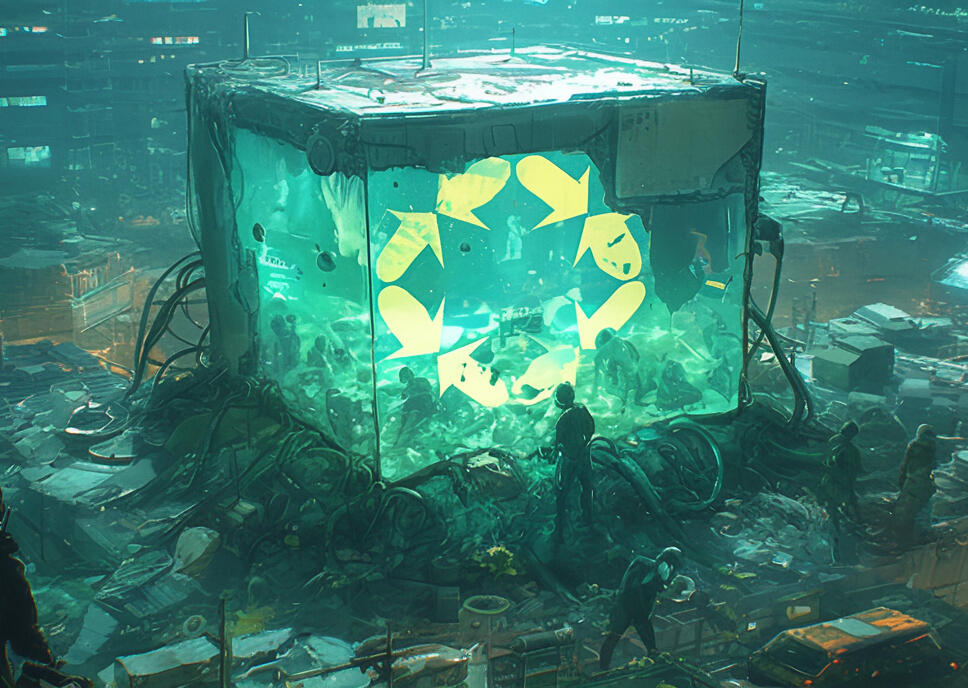
The 264-XM-P parasite’s origin remains shrouded in secrecy, though NASA’s involvement in its initial testing and research has been documented. It is believed that the parasite was studied over several months as part of a classified project. Approximately ten months into testing, a catastrophic incident occurred when a scientist, driven by greed and ambition, accidentally spilled samples containing live parasites. The parasites entered his body, causing rapid zombification. Unaware of the danger, colleagues attempted to assist, becoming infected themselves.
The outbreak spread rapidly within the facility. Zombified scientists exhibited enhanced strength, agility, and heightened senses (excluding vision, as blood walkers are blind). Efforts to contain the infection failed as more staff succumbed, leading to the destruction of the facility's science wing. Remaining scientists attempted to alert authorities but were overwhelmed by the infected, who began escaping into the surrounding population.
As blood walkers spread across the United States, panic ensued. Highways, airports, and other transportation hubs became overcrowded with fleeing civilians, creating prime conditions for mass infections. The blood walkers attacked relentlessly, decimating entire cities, neighborhoods, and towns. Survivors faced growing challenges as power grids failed, communication networks collapsed, and essential services ceased.
With no clear cure or rescue in sight, survivors were forced to adapt. Small factions formed, each with unique survival strategies. Some sought isolation in rural areas, while others banded together in fortified urban zones. Fear and uncertainty pervaded as survivors speculated about the infection’s global impact and whether any external aid might arrive.
Airborne Transmission
Airborne spread is one of the most concerning forms of infection. The 264-XM-P parasite’s venomous nature allows it to destroy internal organs, cells, and tissues rapidly. Infected individuals' saliva and secretions become saturated with the parasite’s venom, making airborne droplets (released through coughing, sneezing, or speaking) a primary mode of transmission.However, the precise risk of airborne infection remains under investigation. While some cases have demonstrated rapid contagion through proximity to infected individuals, others have involved uninfected individuals in contained spaces avoiding infection altogether. Scientists hypothesize that the venom’s potency diminishes as it spreads through the host’s body, which naturally attempts to combat the parasite. This attenuation might reduce the likelihood of infection via airborne droplets in certain conditions. Regardless, strict precautions, such as wearing protective gear and maintaining isolation protocols, remain critical.
Airborne Mutations
Exposure to airborne droplets has led to rare but alarming mutations. Fragments of the parasite’s DNA can integrate into the host's body, giving rise to a new strain, 541-TD-R. This strain thrives on the host's nutrients, creating unique symptoms such as extreme hunger and thirst. Unlike the original parasite, the 541-TD-R variant does not sacrifice vision; instead, it renders the host blind to smell and hearing. These hosts are prone to rapid zombification, driven by the parasite's insatiable need for sustenance.
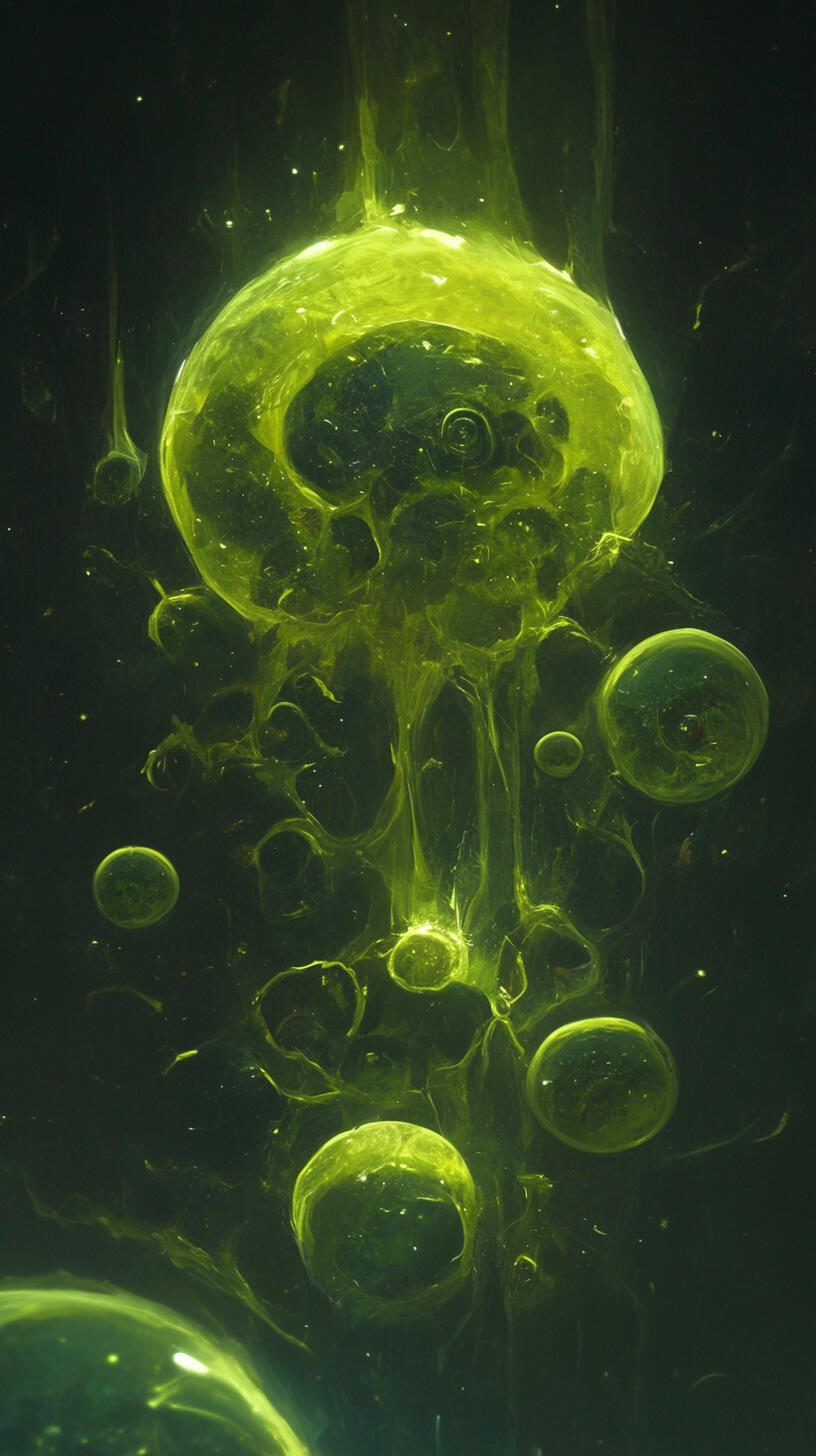
Waterborne Transmission
In waterborne settings, the 264-XM-P parasite’s transmission is slightly less efficient but no less dangerous. Eggs of the parasite, protected by a venomous coating called toximucosa, are often deposited in water sources, including lakes, swamps, and even plumbing systems. Individuals exposed to contaminated water risk varying degrees of infection.
Effects of Toximucosa
The toximucosa coating on parasite eggs acts as both a defense mechanism and a mode of infection. Contact with the coating can cause severe burns, rashes, blisters, itching, and skin breakage. Open wounds significantly increase the risk of full infection, as the venom and parasites can enter the bloodstream, often leading to rapid death rather than zombification.
Unique Waterborne Symptoms
Waterborne infections tend to result in more severe and rapid symptoms compared to airborne cases. The parasite combines its venomous effects with properties of its eggs, consuming the host internally. This process accelerates organ failure, leading to death within days. Infected individuals from waterborne transmission rarely zombify; instead, the host is entirely destroyed by the parasite's aggressive consumption of bodily resources.

Physical Contact & Bodily Fluids
Direct contact with an infected individual or their bodily fluids presents another significant transmission risk. Bodily fluids such as saliva, blood, or feces can carry the parasite in both its active and egg forms. Physical contact enables the parasite to swiftly transfer from host to host, often through skin lesions or mucosal membranes.
Physical Contact Risks
While skin-to-skin contact can transmit the parasite’s bacteria, the risk of death outweighs zombification in most cases. The venom, combined with bacterial infection, rapidly deteriorates the body, causing intense symptoms like organ failure, paralysis, and neurological breakdown.
Asymptomatic Carriers
Some infected individuals show no symptoms, complicating efforts to prevent the parasite’s spread. These carriers can unknowingly transmit the bacteria and venom through casual physical contact or shared environments. Isolation of anyone exposed to blood walkers or suspected infection remains vital, regardless of visible symptoms.

Entry Journals
The Survival Stories journal entries serve as first-hand accounts documenting the harrowing experiences of individuals during the early stages of the catastrophic apocalypse. These entries are critical for understanding the diverse and evolving challenges faced by survivors in a world teetering on the edge of total collapse. Each journal provides a unique perspective on survival, detailing not only the physical and emotional toll of navigating a world filled with monstrous creatures and societal breakdowns but also the psychological strain of isolation, fear, and loss.The journals offer invaluable insights into the spread of the highly contagious disease 264-XM-P, the formation of new social structures, and the transformation of human behavior in extreme conditions. Each entry captures the desperation of those fighting to maintain their humanity while grappling with the grotesque horrors unleashed by the outbreak. These records serve not only as personal testimonies but also as essential data points for understanding the mutation of the disease, the evolution of its carriers, and the survival strategies employed by those still fighting for life.From strategic survival techniques to reflections on the moral decay brought on by the apocalypse, the Survival Stories journals highlight the devastating consequences of human greed, the fragility of civilization, and the indomitable will to survive against all odds. As you engage with these entries, you will gain a deeper comprehension of the complex interplay between hope and despair in a world where every moment could be their last.
Journal Entry - Timothy Parker
I barely escaped a horde of… creatures. I’m out of breath, drenched in sweat, and my heart feels like it’s about to burst from my chest. There’s no one left—no safety, no help, just silence and bloodstains. Weeks ago, there was screaming everywhere, stampedes in every direction, but now? It’s eerily empty. These creatures… they’re all different. Some are blind but hear everything; others can see perfectly and sense the faintest movement. I’ve crammed myself into so many cupboards to hide, I’m surprised my body hasn’t given out. I don’t know how much longer I can survive.
Journal Entry - Hannah Pollock
Everything is destroyed and contaminated. This outbreak is worse than anything history has seen—worse than the bubonic plague, the flu, or even COVID-19. There’s no electricity, no communication. I’ve tried satellites, even reached out to Europe, but nothing works. Traveling is a nightmare. The highways, train stations, airports, and docks are clogged with bodies and those… creatures. I’m less afraid of being bitten than I am of inhaling whatever particles carry this infection. Every breath feels like a gamble.
Journal Entry - Matthew Hayes
This world isn’t real anymore. Even if I could find a working car, all the gas stations are empty, looted during the chaos. Traveling might not even matter—how many states are infected now? I’ve joined a group calling themselves “Ashes of Humanity,” but not by choice. When they found me hiding in a convenience store, it was join them or die. I’ve seen things I can’t unsee: their cruelty, their savagery, almost as horrifying as the creatures outside. I should’ve chosen death, but I have to find my fiancée. I need to know if she’s alive.
Journal Entry - Jasmina Willard
This disease… it’s like nothing I’ve ever seen. It’s monstrous, a nightmare created in a lab. The scientists who unleashed this did it for their own greed, and now we’re all paying the price. In my group, I’ve watched the infection take hold of people I cared about. My sister was one of them. I promised to keep her safe, but I couldn’t. Her symptoms were horrific—her skin blistering, bones showing through, hair falling out, vomiting blood. I tried to stay close, to remind her I was there, but I couldn’t save her. Those scientists are gone, consumed by their own creation, but their legacy is this living hell.
Quarantine & Isolation Protocols
Infected individuals or those suspected of exposure to 264-XM-P must be isolated immediately under the following conditions:
After being bitten by a blood walker or exposed to high-risk zones (e.g., swamps, lakes).
If displaying symptoms that resemble common infections (e.g., flu, strep throat, bronchitis, or pneumonia).
Until symptoms specific to 264-XM-P are confirmed or ruled out, assume any sick individual is contagious. This is especially critical during the first 1–3 weeks of infection, as germs expelled by coughing, sneezing, itching, or a runny nose can spread the parasite's bacteria, venom, or eggs.
Physical Barriers & Protection
When navigating high-risk areas (e.g., lakes, swamps, or other water bodies), ensure all bodily entry points are protected:
Use earplugs, nose clamps, goggles, and even butt plugs (to block parasite entry).
Recommended Protective Gear:
Gas masks or face coverings.
Disposable gloves and closed-toe footwear.
Full-body suits or armor under clothing for added protection.
Helmets and goggles for additional coverage.

Hygiene Practices:
Filter water through cloth or paper towels and boil before use.
Maintain personal hygiene, including:
Proper bathing with clean water.
Dental care (brushing and flossing).
Menstrual hygiene using appropriate products.
Cleaning under nails and grooming hair.
Regularly disinfect frequently touched surfaces.
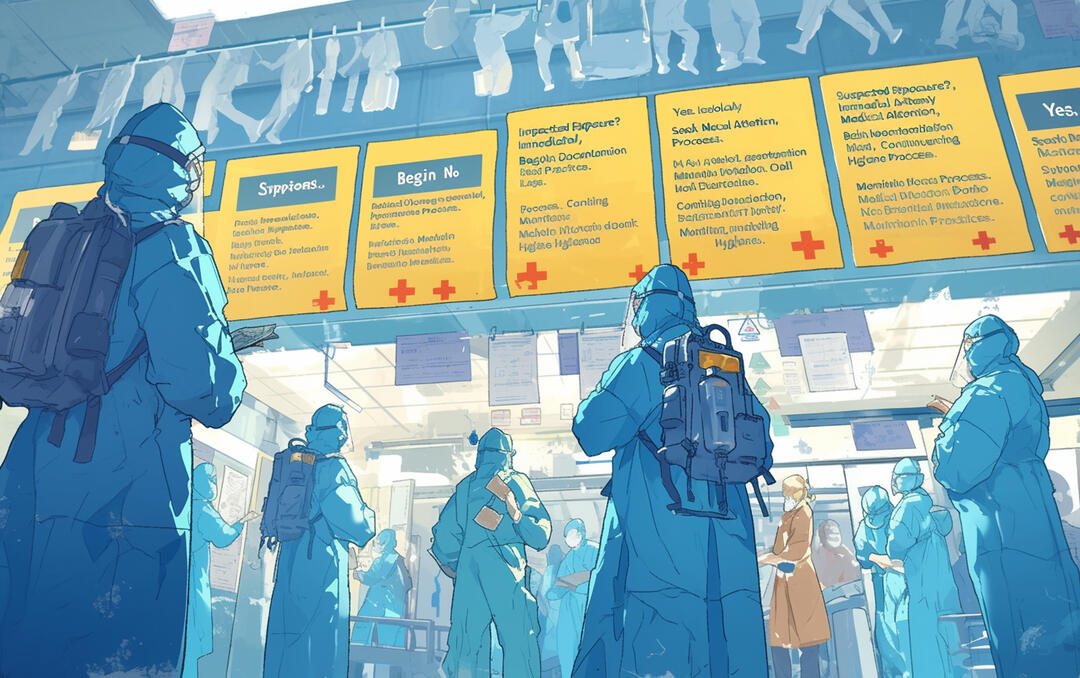
General Quarantine Practices
Survivors must adhere to these baseline protocols to minimize the risk of spread:
Sanitation Protocols:
Use ethanol or isopropyl alcohol for disinfection.
Regularly clean with disinfectant sprays, wipes, and soap.
Discard contaminated clothing and footwear.
Wash hands thoroughly with unscented antibacterial soap and filtered water or use hand sanitizer.
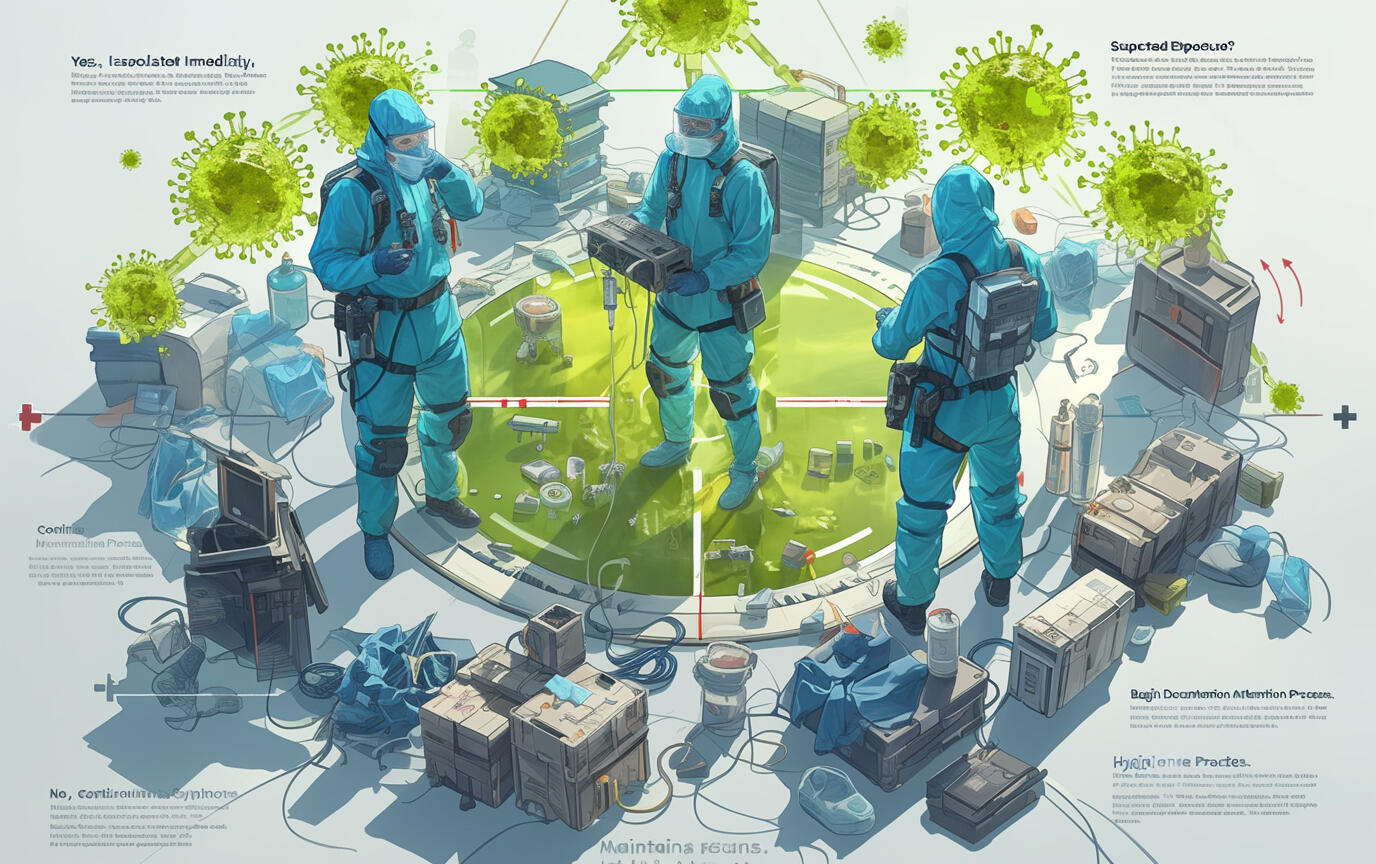
Self-Containment:
Infected individuals should wear masks and remain in isolation.
Maintain at least 8–10 feet of distance between infected and uninfected individuals.
Use tissues to cover coughs and sneezes.
Assign isolated containment rooms for each infected person, even if others are also infected.
While sanitation cannot eliminate parasites entirely, it reduces the expulsion of germs, making surrounding environments somewhat safer.
Safe Zones & Shelters
Safe zones are critical for survivor groups. Properly constructed zones must separate infected and uninfected individuals to avoid mass outbreaks.
Key Safe Zone Guidelines:
Use small, secure spaces (e.g., bunkers, shelters, cells).
Establish strong barriers between infected and uninfected groups.
Regularly disinfect all areas.
Prevent overcrowding to avoid catastrophic events if an infected individual transforms into a blood walker.
Vaccination & Immunization Efforts
To date, no successful vaccines or cures exist for 264-XM-P, largely due to the parasite's ability to thrive in the human body’s stable conditions. Failed vaccine strategies have included:
Lowering body temperatures to near hypothermic states to kill parasites.
Stimulating the immune system to overreact upon exposure (risking severe damage).
Introducing live bacteria to attack the parasite, which also damages healthy cells.
Using laxatives to flush out parasites, which leads to dehydration and organ failure.
Alternative Remedies in Use:
While not curative, survivors use these natural remedies to alleviate symptoms and delay infection progression:
Sage, mint, honey, ginger, green tea, probiotics, and chamomile.
Citrus fruits, yogurt, aloe vera, tea tree oil, and beets.
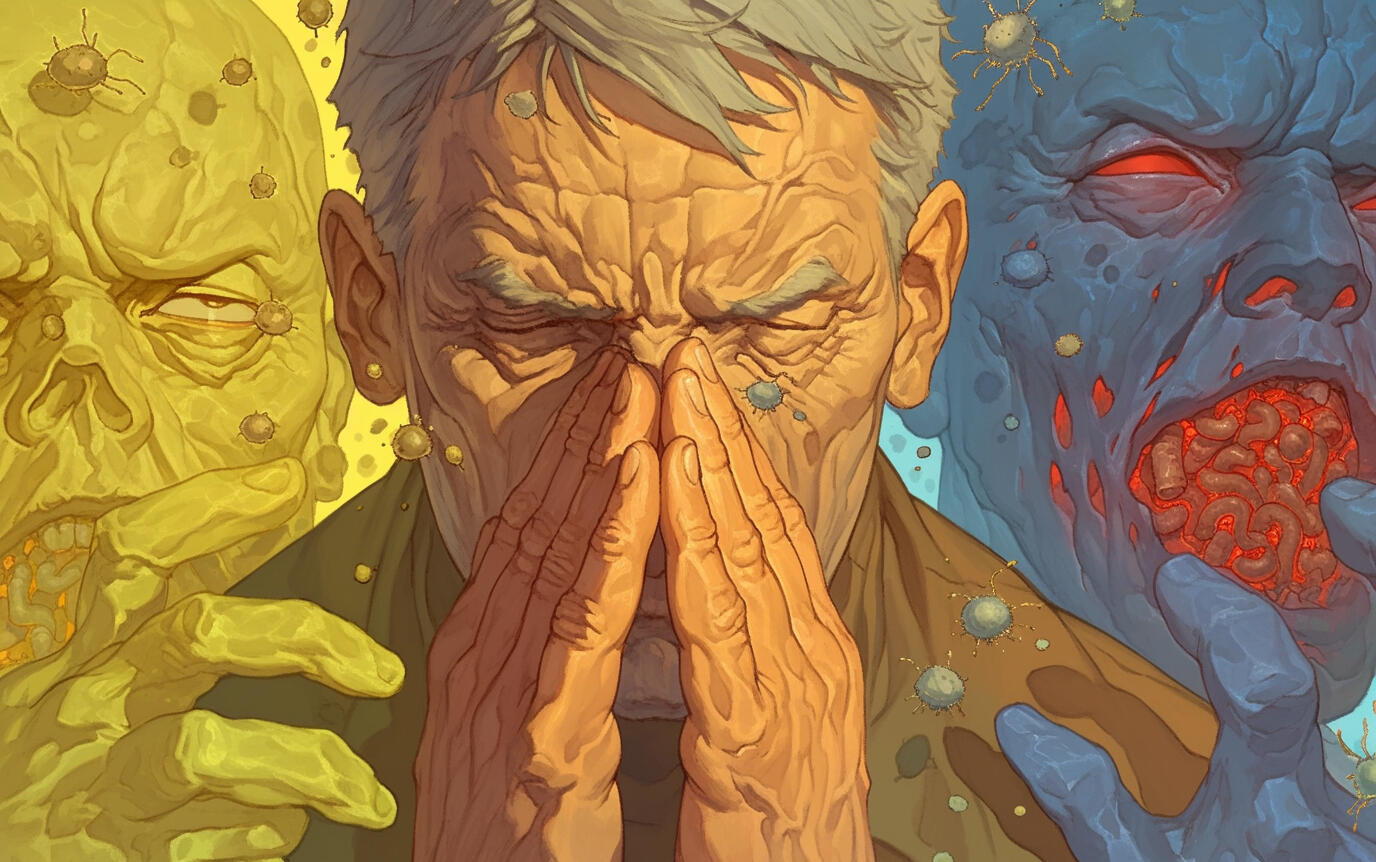
Special Precautions for Vulnerable Groups
Elderly:
Elderly individuals must be isolated quickly, as their weaker immune systems make them highly susceptible.
They are often prioritized in “cushion sanctions” (safe, highly disinfected areas for vulnerable groups).
Children:
Children must remain supervised at all times.
Children under 14 are restricted from leaving base camps.
Older children (ages 14–17) should begin survival training.
Pregnant Women:
Pregnant women should avoid strenuous activity and scavenging missions.
Some survivor groups treat pregnancies as liabilities, leading to ostracization or abuse in extreme cases.
Before Decontamination
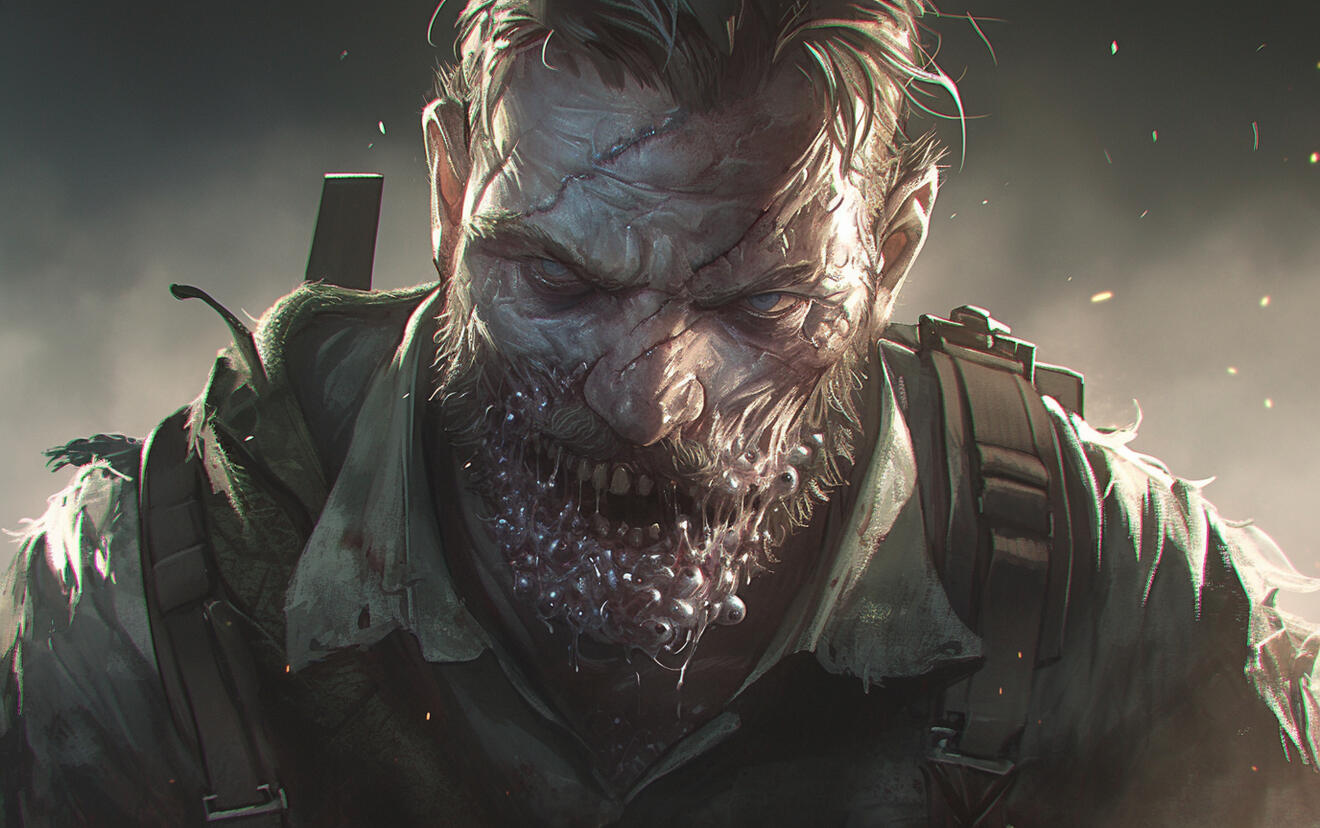
"Skipped decontamination: High risk of infection."
Risks of skipping decontamination:
Spreading infection
Worsening symptoms
Endangerment of others
After
Decontamination
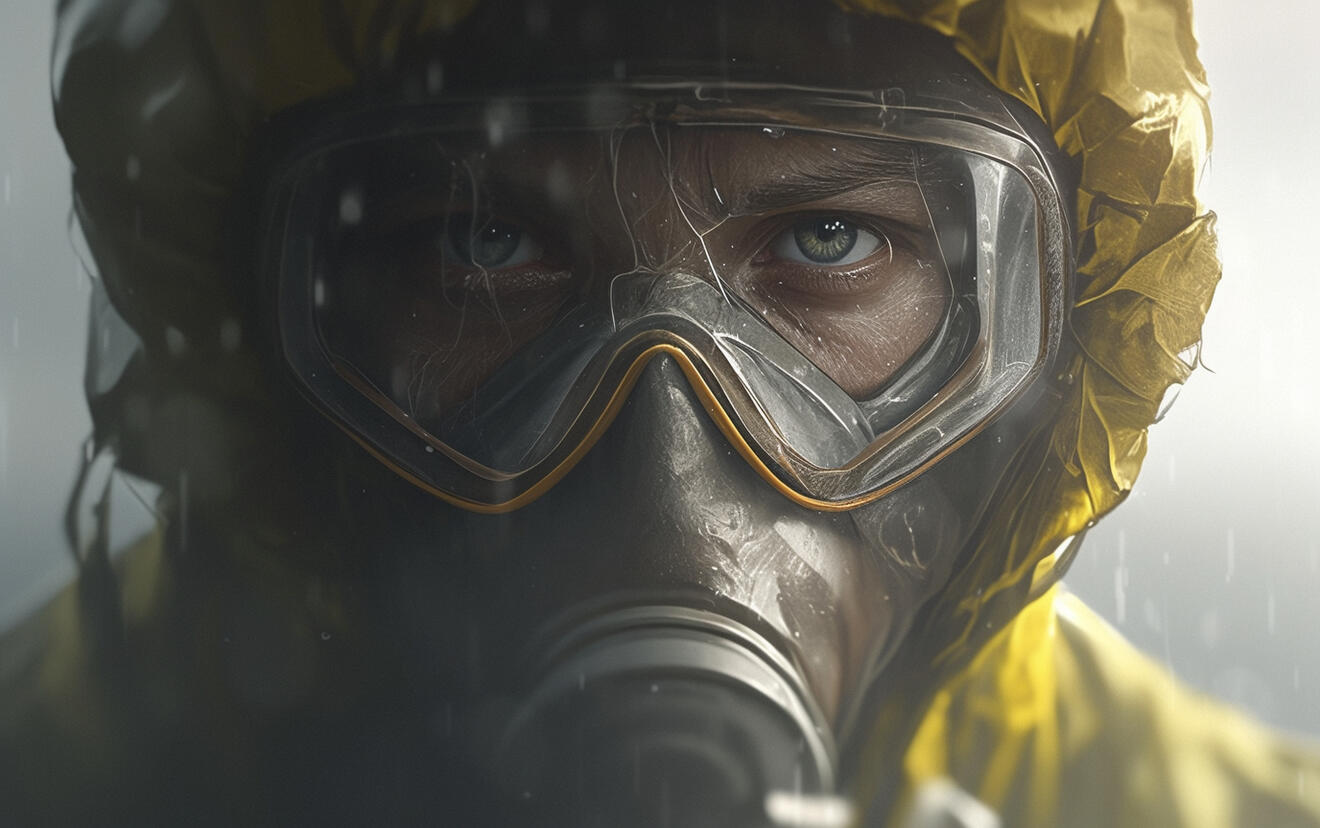
"Followed decontamination: Protected and safe."
Proper decontamination steps:
Remove contaminated clothing.
Wash with filtered water and disinfectant.
Inspect for any parasite activity.
The Life Cycle of: Periosis
Stage 1: The Egg
The parasite begins as an egg, typically laid in damp, contaminated environments like swamps, stagnant pools, or even plumbing systems. The eggs are microscopic and thrive in wet, nutrient-rich conditions.
Exposure to water sources, such as drinking from contaminated streams or using infected plumbing, introduces the parasite into hosts. The eggs can also attach to open wounds if contact with infected water occurs.
Stage 2: Larvae
Once ingested or otherwise introduced to a host (via wound contact, skin penetration, or respiratory exposure), the eggs hatch into larvae.
These larvae travel through the host's body, often entering the bloodstream or organ tissue, where they seek out vital organs for sustenance.
The larvae begin decomposing tissue, using it as an energy source, and triggering a range of symptoms as they damage cells and weaken the immune system.
Stage 3: Mature Parasite
The parasite matures quickly within the host, establishing itself in organs where it continues its destructive behavior.
The parasite reproduces inside the host, creating offspring within the bloodstream or vital tissues.
Symptoms in this stage often worsen significantly, with signs like coughing blood, fever, and blackened skin due to internal damage.
If the host is not fatally compromised, the parasite may release eggs into the host’s respiratory and digestive tracts, allowing it to spread via bodily fluids such as saliva, blood, and respiratory droplets.
Stage 4: Transmission
The infected host now acts as a carrier, releasing eggs through expulsion (coughing, sneezing, or other bodily fluids) or from open wounds.
When these eggs encounter new environments, they either remain dormant until favorable conditions arise or quickly hatch if conditions support further transmission. New hosts become infected upon ingesting, inhaling, or contacting these eggs or larvae, starting the cycle anew.
Stage 5: Death and Decomposition
Once the host succumbs to the infection, the parasite continues decomposing the body. This final stage provides nutrients that attract other organisms, increasing the chances of cross-species contamination.
The parasites eventually die out within 2–3 weeks, but not before laying eggs within the environment or the host’s remains, which sustains their presence in nature and potentially infects scavenging animals or nearby humans.


